

DOL Explains When Employees Must Be Paid for Travel Time
Jul 6, 2018
Eighty years ago the Fair Labor Standards Act (FLSA) established federal minimum wage and overtime requirements for hourly employees. The law’s basic tenet seems straightforward: Employers must pay employees for their “work.” Yet for many employers, compliance with the FLSA on issues such as employee travel time continues to be problematic because the FLSA does not really explain when an employee is at “work.”
The FLSA and Portal-to-Portal Act
The Supreme Court initially explained that “work” time means when an employee’s activities are controlled or required primarily for the benefit of the employer. Congress subsequently added some specifics to the Supreme Court’s expansive definition. The Portal-to-Portal Act, an amendment to the FLSA, provides that employee work time does not include:
(1) Travel to and from the actual place of performance of the principal activity the employee is employed to perform; or
(2) Activities that are undertaken before or after the employee’s principal work activity.
Three Scenarios and DOL’s Opinion Letter FLSA 2018-18
Recently, the U.S. Department of Labor (DOL) issued an opinion letter in response to a company’s questions about travel time pay for a group of hourly employees who repair, inspect and test construction cranes. The employees do not have a fixed work location; they travel to various customer locations each day. They usually work eight to twelve hour days servicing cranes, and generally start work at around 7:00 a.m. Depending on the availability of parts and other factors, the employees may need to stay in a hotel overnight and return in the morning to complete a job. Employees are provided company vehicles that may be used for both work and personal matters.
Three travel time scenarios were considered by the DOL:
(1) Employee travel time from home to the company’s office, using a company vehicle, to obtain a job itinerary and then continue on to various customer locations. Travel time from home to office varies from 15 minutes to an hour, depending on where the employee lives.
(2) Employee travel time from home directly to a customer location; and
(3) Employee travel time by plane on a Sunday from home to an out-of-state destination for a company training that begins at 8:00 a.m. on Monday. The training continues through Friday, with return travel home on Friday after class, or occasionally on Saturday, depending on flight availability.
The first two scenarios involve common commutes to and from work. Under the Portal-to-Portal Act, employees do not need to be paid for time spent commuting between home and work. This generally holds true, even when the employee travels directly from home to different job sites, unless the commute time involved is extraordinary. Once the employee has arrived at the job, however, FLSA regulations require payment for all travel time between job sites during the day. Use of a company-provided vehicle within the normal commuting area typically does not convert the employee’s ordinary commute into compensable work time.
Scenario three implicated how to account for employee travel time away from home, both on the weekend and overnight. Travel away from home is clearly worktime when it cuts across the employee’s usual work day; the employee is simply substituting travel for usual job duties. This also includes travel time on Saturday and Sunday that corresponds to the employee’s normal working hours on other days of the week. The DOL also noted that an employee must be paid for all time the employee is actually required to work while on travel, irrespective of whether or not it falls within the employee’s regular work day.
What Does this Mean to You?
Calculating employee travel time can pose a significant challenge for many employers. There are multiple factors you must take into account, even when an employee is traveling within his home territory. There are no bright lines to establish when an employee has strayed outside his normal commuting area, converting what would have been an unpaid commute into time on the clock. The FLSA requires employers to maintain accurate time records for employees; a failure to do so can result in significant statutory damages and attorneys’ fees.
If you find yourself facing such employee travel circumstances as described here, the employment law attorneys at Bean, Kinney & Korman can assist in evaluating your company’s particular environment and help craft a reasonable solution that will address the situation.
- R. Douglas Taylor, Jr.
Related Practices Areas
- Business & Finance
Related Industries
- Associations & Nonprofit Organizations
- Professional & Licensed Occupations
- Retailers & Restaurateurs
- Small, Emerging & Growing Businesses
- Search Search Please fill out this field.
- Building Your Business
- Business Taxes
When Must I Pay Employees for Travel Time?
Travel Time vs. Commuting Time
Image by Jo Zixuan Zhou © The Balance 2020
In general, your business should pay employees for the time they spend traveling for work-related activities. You don't have to pay employees for travel that is incidental to the employee's duties and time spent commuting (traveling between home and work). Travel time can include both local trips and travel away from home.
Travel vs. Commuting Time
Commuting is going back and forth to work. Everyone (at least everyone who doesn't work at home) commutes to a job. Commuting time is personal time, not business time. The IRS does not allow businesses to deduct commuting time as a business expense, and employees should not be paid for the commuting time.
The Department of Labor (DOL) discusses employees who drive employer-provided vehicles. The DOL considers the time spent in home-to-work travel by an employee in an employer-provided vehicle, or in activities performed by an employee that are incidental to the use of the vehicle for commuting, generally is not "hours worked" and, therefore, does not have to be paid.
Here's a possible rule of thumb: If your business authorizes a trip by an employee, no matter how the employee travels (car, train, bus, etc.) you should pay for the employee's travel time.
Travel time for hourly and salaried employees may be counted differently. Pay to employees for local travel time is only applicable to non-exempt (hourly) employees, not to exempt (professional or managerial) employees. Exempt employees are paid for their expertise by the job, not by the hour.
Different Types of Travel Time:
Home to Work Travel , as explained above, is commuting time, not work time, and it's not paid.
Travel on Special One Day Assignment in Another City. The DOL says "the time spent in traveling to and return from the other city is work time," but they note that you may deduct the time the employee would spend commuting.
Sara works in an office in your company, but you send her to another city on a special assignment. She leaves from her home, goes to the city, and comes back home the same day. She spends 3 hours traveling (1 1/2 hours each way) from home to the other city. She would normally spend 30 minutes total driving from her home to work and back, so you could deduct the 30 minutes and pay her for 2 1/2 hours of travel time.
Travel That's Part of the Employee's Normal Work. Time an employee spends traveling is part of the job. You must count this time as work time. The time the employee spends going to the first job site, and home from the last job site, is commuting time and isn't paid.
An LPN (licensed professional nurse) works for a nursing facility and travels between the two locations of this facility, providing care for patients at both locations. Her daily travel time between these locations must be included in her pay because she is not commuting. But she can't count the time driving from home to the first location or the time back home from the last location.
Travel Away from Home. If travel includes an overnight stay it is travel time. The DOL doesn't include travel away from home outside regular hours as a passenger on an airplane, train, boat, bus, or car as work time. But you must count hours worked on regular working days and work hours on nonworking days (weekends and holidays).
If an employee travels from Cleveland to Pittsburgh for a two-day seminar at the direction of your company, you must pay for the hours the employee would have worked in a normal workday for each of those days, even if they were on Saturday or Sunday.
Incidental vs. Work Travel: Paid or Not Paid?
- An employee drives to work from his home every day. You ask him to stop on his way and pick up bagels for the staff meeting. This driving time is not paid. Time commuting to work is never paid time; the time to stop for the bagels is "incidental" to the commuting and is not part of the employee's job.
- You ask an employee to drive to a store on work time to get bagels for the office meeting. If the employee makes this trip during normal work hours, he or she should be paid.
Also, you might want to contact an employment attorney to discuss these issues.
Paying for Travel Expenses
In addition to paying employees for travel time, you should pay their expenses for travel. The Department of Labor doesn't require reimbursement for travel expenses, but it makes sense to pay employees if you require them to travel. Your business can deduct employee travel expenses as a business expense. If employees mix business and personal travel, you need to sort out the part that is business-related and pay only these expenses.
State Regulations on Paying for Employee Travel
Check with your state labor department to see if there are any rules which might override the federal rules. Contact the nearest local office of the U.S. Department of Labor for information on specific instances of travel time that affect your business.
Internal Revenue Service. " Publication 535 (2019): Business Expenses ," Page 5. Accessed May 26, 2020.
Internal Revenue Service. " Travel & Entertainment Expenses ," Page 3. Accessed May 26, 2020.
U.S. Department of Labor. " Travel Time ." Accessed May 26, 2020.
Electronic Code of Federal Regulations. " Travel Time ." Accessed May 26, 2020.
U.S. Office of Personnel Management. " Fact Sheet: Hours of Work for Travel ." Accessed May 26, 2020.
U.S. Department of Labor. " Fact Sheet #17D: Exemption for Professional Employees Under the Fair Labor Standards Act (FLSA) ," Pages 1-3. Accessed May 26, 2020.
U.S. Department of Labor. " Fact Sheet #22: Hours Worked Under the Fair Labor Standards Act (FLSA) ." Accessed May 26, 2020.
U.S. Department of Labor. " Opinion Letter FLSA 2018 ," Page 2. Accessed May 26, 2020.
U.S. Department of Labor. " Reimbursed Travel Expense Payments ," Page 1. Accessed May 26, 2020.
Internal Revenue Service. " Topic No. 511 Business Travel Expenses ." Accessed May 26, 2020.
An official website of the United States government.
Here’s how you know
The .gov means it’s official. Federal government websites often end in .gov or .mil. Before sharing sensitive information, make sure you’re on a federal government site.
The site is secure. The https:// ensures that you are connecting to the official website and that any information you provide is encrypted and transmitted securely.
- Misclassification
- Family and Medical Leave Act (FMLA)
- Pump at Work
- Maternal Health
- Retaliation
- Government Contracts
- Immigration
- Child Labor
- Agricultural Employment
- Subminimum Wage
- Employment of Workers With Disabilities
- Lie Detector Tests
- Davis Bacon Prevailing Wage Survey
- WORKER RIGHTS
- Resources For Employers
- Regulatory Library
- Interpretive Guidance
- Industry-Specific Resources
- Compliance Assistance
- elaws Advisors
- Fact Sheets
- New and Small Businesses Resources
- Presentations
- External User Portal (EUP)
- Compliance Assistance Toolkits
- New and Small Business Resources
- Publications By Language
- FLSA Compliance Videos
- Know Your Rights Video Series
- Employer.gov
- DOL Enforcement Database
- Workers Owed Wages
- Order Publications
- Laws and Regulations
- Field Handbook
- Administrator Interpretations, Opinion and Ruling Letters
- Field Bulletins
- State Minimum Wage Laws
- State Labor Law Topics
- State Labor Offices
- Resources for State and Local Governments
- NEWS RELEASES
- Travel Time
- Credit toward Wages under Section 3(m) of the FLSA for Lodging Provided to Employees
- Domestic Service Final Rule Frequently Asked Questions (FAQs)
- Domestic Service Workers Under the Fair Labor Standards Act: Fact Sheets
- Exclusion of Sleep Time from Hours Worked by Domestic Service Employees
- For Agencies and Other Employers
- For Individuals and Families
- For Workers
- Home Care: Additional Resources
- Medicaid Shared Living Programs
- Paying Minimum Wage and Overtime to Home Care Workers: A Guide for Consumers and their Families to the FLSA
- Rest Breaks and Meal Breaks
- What are the minimum wage, overtime pay, and recordkeeping requirements?
A worker who travels from home to work and returns to his or her home at the end of the workday is engaged in ordinary home-to-work travel which is a normal incident of employment. Normal travel from home to work and return at the end of the workday is not work time. This is true whether the employee works at a fixed location or at a different location each day. For live-in workers, home-to-work travel that is typically unpaid does not apply in this case because the employee begins and ends his or her workday at the same home in which he or she resides.
Travel that is all in a day's work, however, is considered hours worked and must be paid.
Example : Barbara is a personal care aide providing assistance to Mr. Jones. Barbara drives him to the Post Office and grocery store during the workday. Barbara is working and the travel time must be paid. Travel away from the home is clearly work time when it cuts across the employee's workday. The employee is merely substituting travel for other duties. Thus, if an employee hired to provide home care services to an individual (consumer) accompanies that consumer on travel away from home, the employee must be paid for all time spent traveling during the employee's regular working hours. As an enforcement policy, WHD will not consider as work time the time the employee spends as a passenger on an airplane, train, boat, bus or automobile when in travel away from home outside of regular working hours. However, the employee must be paid for all hours engaged in work or "engaged to wait" while on travel. For example, an employee who is required to travel as a passenger with the consumer "as an assistant or helper" and is expected to perform services as needed is working even though traveling outside of the employee's regular work hours. However, periods where the employee is completely relieved from duty, which are long enough to enable him or her to use the time effectively for his or her own purposes, are not hours worked and need not be compensated.
Example : John is a personal attendant for Mrs. Brown, who lives in Atlanta. Mrs. Brown attends a conference in New York City and John accompanies her by plane. John normally works 8:00 am to 4:00 pm. Mrs. Brown's daughter takes her to the airport where they meet John for the flight at 6:00 pm. WHD will not consider the flight time as compensable hours because it is time spent in travel away from home outside of regular working hours as a passenger on an airplane if John is completely relieved from duty. If John provides assistance to Mrs. Brown while at the airport or during the flight or must be available to assist or help as needed, he is working and must be compensated for this time.
Direct care workers who are employed by a third-party employer : Such an employee who travels from home to work and returns to his or her home at the end of the workday is engaged in ordinary home-to-work travel that is not compensable work time. However, travel from job site to job site during the workday, such as travel between several clients during the workday, is compensable hours worked. The third-party employer is responsible for ensuring that travel time from job site to job site is paid.


An official website of the United States government
Here’s how you know
Official websites use .gov A .gov website belongs to an official government organization in the United States.
Secure .gov websites use HTTPS A lock ( Lock A locked padlock ) or https:// means you’ve safely connected to the .gov website. Share sensitive information only on official, secure websites.

Office of Human Resources Management
- Practitioners
- Compensation Policies
- Premium Pay
Was this page helpful?
Travel time as hours of work, applicability.
This information applies to GS, FP, and FWS EXEMPT and NONEXEMPT employees.
When is Travel Compensable
Time in a travel status away from the official duty station is compensable for EXEMPT and NONEXEMPT employees when the travel is performed within the regularly scheduled administrative workweek, including regularly scheduled overtime. In addition, travel is compensable for both categories of employees for purposes of meeting the daily and weekly overtime standards when it:
- Involves the performance of work while traveling, (e.g., as a chauffeur or courier);
- Is incident to work performed while traveling (e.g., a courier's travel relative to the spot where further travel to deliver a diplomatic pouch would begin);
- Is carried out under such arduous and unusual conditions that the travel is inseparable from work; or
- Results from an event which could not be scheduled or controlled administratively, including travel by an employee to such an event and the employee's return from such an event to his or her official duty station.
For a NONEXEMPT employee, travel meeting the weekly overtime standard (but not the daily overtime standard) also includes:
- Travel as a passenger on an overnight assignment during hours on nonworkdays which correspond to regular working hours; and
- One-day travel as a passenger to and from a temporary duty station (not including travel between home and the employee's normal duty station).
Who Makes the Determination
Officials to whom authority has been delegated to authorize or approve travel on official business are responsible for determining whether travel outside the regularly scheduled workweek meets any of the conditions for hours of work.
How Much Travel Time is Creditable For Pay
When travel outside the normal workweek constitutes hours of work, the following rules will apply in determining the amount of time in a travel status that is deemed hours of work for premium pay:
When is an employee in travel status . An employee is in a travel status only for those hours actually traveling between the official duty station and the point of destination, or between two temporary duty points, and the usual waiting time which interrupts travel.
When traveling by common carrier . Time in a travel status begins with the scheduled time of departure from the common carrier terminal, and ends upon arrival at the common carrier terminal located at the destination. However, when the employee spends 1 hour or more in travel between the common carrier terminal and place of business or residence, then the entire time traveling between the carrier terminal and place of business or residence (that is actual time traveling, exclusive of waiting time at the terminal prior to the scheduled departure time) counts as hours of work.
Waiting time . Usual waiting time between segments of a trip or at common carrier terminals counts as worktime for premium pay (up to 3 hours in unusually adverse circumstances, e.g., holiday air traffic, severe weather) provided travel away from the duty station is compensable because it meets any of the conditions of this Section.
Authority to Order Noncompensable Travel
Congress has not provided a remedy whereby an EXEMPT employee who performs official but noncompensable hours of travel may be compensated (57 Comp. Gen. 43, 50, 1977). A manager does, however, have the authority to schedule official travel that is noncompensable. As a requirement of 5 CFR 610.123, the manager must record the reasons for ordering such travel in a memo to be filed with the employee's Time and Attendance Report (T&A). A copy of the memo must be given the employee if the employee requests it.
Work performed while traveling . In order to meet the intent of the law as defined in the majority of Comptroller General decisions, work performed while traveling must be work which is inherent in the employee's job and which can only be performed while traveling, e.g., chauffeuring, hurricane reconnaissance performed aboard a plane flying into the eye of the hurricane, etc. Discretionary work such as review of a scientific presentation by a scientist or treaty papers by a foreign service officer enroute to a meeting is work which could be performed in an office independently of travel and does not satisfy the definition of work while traveling and is, therefore, not compensable for purposes of overtime. (B-146288, January 3, 1975)
Work incident to work performed while traveling . Travel which is incident to work performed while traveling must also meet the definition of "work performed while traveling" above. Travel which is necessary to meet another mode of travel is compensable for overtime purposes if the traveler performs work while traveling which is an inherent part of the job and which could only be performed while traveling, for example, a motor vehicle operator who is ordered to travel by plane in order to take responsibility for a truck which he or she is then to deliver to its permanent location (57 Comp. Gen. 43 (1977), or a courier who travels to pick up and deliver a pouch (B-178458, dated June 22, 1973). Travel and incidental transport of files is not within the definition since the transportation of files is work not inherent in the job (B-181632, dated April 1, 1975).
Travel under arduous conditions . Arduous means more than the inconvenience associated with long travel delays, unbroken travel, unpleasant weather, or bad roads. Prolonged travel in heavy blowing snow which makes driving difficult but stops short of endangering the employee might be considered arduous. A distinction must be made between travel which is arduous and travel which is hazardous duty. Each case must be judged on its own merits (B-193623,
July 23, 1979).
Travel resulting from an event which could not be administratively scheduled or controlled . An event that cannot be administratively scheduled or controlled implies immediate official necessity for travel. If it is discretionary when the employee begins travel, not including the minimum necessary time to make travel arrangements, the notion of immediate necessity which is implied by an event that could not be scheduled or controlled is lacking and the intent of the law as defined by the General Accounting Office is not satisfied. Therefore, time spent in such travel would not be compensable for overtime purposes
(B-186005, August 31, 1976).
Within the agency's administrative control . Whether the scheduling or timing of the event that precipitates an employee's travel was within the administrative control of the agency is strictly interpreted in decisions of the Comptroller General (CG). Travel on overtime to and from a meeting arranged at the discretion of two Federal agencies is not compensable since agencies have it within their power to ensure that the employee travels during work time (B-146288, January 3, 1975 et alia).
For the same reason, travel to and from training which is conducted by the government, under government contract or by a private institution solely for the benefit* of the government is not compensable since the government has it within its power to ensure that the start and end times of such training allow the employee to travel on work time (B-190494, May 8, 1978; also, 66 CG 620, 1987).
*In William A. Lewis et al, 69 CG 545 (1990). The CG ruled travel on overtime to and from training that is given by a private institution is compensable because government cannot control the private institution or its scheduling of the course. The Lewis opinion further held that the notion of "immediate official necessity for travel" which prior CG decisions have held must be present in travel which responds to an event that is not schedulable or controllable was established by the start time of the class. To be present when the class began, the employees had to travel on Sunday.
NOTE : The regulations which govern training time which is compensable as overtime and travel to and from training are separate and distinct. The circumstances under which premium pay may be paid while an individual is in training are covered in the section titled Premium Pay and Training.
Meeting abroad - a matter of accommodation . An employee's claim for overtime compensation for travel overseas to be present at the opening of a conference with representatives of a foreign government was disallowed. Although the employee's agency indirectly scheduled the meeting through the USAID Mission, the Comptroller General ruled the lack of governmental control envisioned by law and regulation for travel on overtime to be deemed compensable was not present. (Gerald C. Holst, B-202694, January 4, 1982; and B-222700, dated October 17, 1986).
NOTE : The Lewis decision (see discussion above) precipitated a review of CG decisions with the result that government control of events was sufficient to validate all previous decisions except one: Gerald C. Holst, was overruled. In overruling the 1986 decision, the Comptroller General found the agency to lack control of the scheduling of the meeting to an appreciable degree. Further, the start time of the opening conference established the immediate official necessity for travel. Travel, was, therefore, compensable.
Failure to plan . An employee who travels outside his or her normal tour of duty to perform maintenance on equipment so that the equipment can perform necessary functions in accordance with operational deadlines is not performing compensable travel if the maintenance responds to gradual deterioration which could have been prevented if maintenance was scheduled on a timely basis (49 Comp. Gen. 209, 1969).
Two-day per diem rule . An employee may be required to travel on his or her own time if in order to allow the employee to travel during working hours, the agency would be required to pay two days or more per diem. However, the two-day per diem rule does not of itself support an entitlement to overtime compensation for the employee. To be compensable at the overtime rate, travel must respond to an event that could not be scheduled or controlled administratively and there must be an immediate official necessity for the travel to be performed outside the employee's regular duty hours (60 Comp. Gen. 681, 1981).
Return travel . When an employee performs compensable overtime by traveling to an event which could not be controlled or scheduled, he or she is automatically eligible for compensation for return travel to his or her duty station.
Disparity in hours of work means disparate overtime entitlement . Because FLSA provides two situations in which a NONEXEMPT employee, but not an EXEMPT employee, can be paid for travel on overtime hours, (specifically, during hours on nonworkdays which correspond to regular working hours and for one-day travel as a passenger to and from a temporary duty station), it is possible for a NONEXEMPT employee to be paid for travel when an EXEMPT employee in the same situation is ineligible for overtime pay.
Share this page
For Agencies
Let's Talk: (844) 800 - 2211
Remembering Shay Litvak Our Co-Founder and CTO
November 1979 - September 2023
When Do Employers Have to Pay Employees for Travel Time?

Deanna deBara
For some small businesses, traveling to meet clients, make sales, and manage day-to-day activities is a must. For others, traveling is valuable for attending conferences, participating in networking events, or undergoing specialized training.
But if it's your employees doing the traveling, do you need to pay them for that time? Whatever your preferences are as a small business owner, the legal answer is: that depends.
Let's explore when you need to provide travel time pay for hourly employees, which employees are entitled to that pay, and, if they are entitled, how much you'll need to pay them.
Who Is Entitled to Travel Pay?
All non-exempt employees are entitled to travel pay during normal work hours and when they are actively working outside of those hours. They aren't entitled to travel pay for doing their typical commute, according to the Fair Labor Standards Act (FLSA).
Non-exempt employees are typically paid an hourly wage and are paid less than $684 per week or $35,568 per year.
These rules don't apply to exempt employees, and therefore it's up to you whether you want to pay them to travel.
What's more—your state may have some extra rules, so make sure to check your state's Department of Labor or Wage and Hour Division website.
When Do You Have to Provide Travel Time Pay for Hourly Employees?
But when, exactly, are these employees paid to travel? Compensable work time needs to be paid when employees travel:
- Locally: You need to pay employees when they travel locally as part of their regular duties (for example, from your office to a supply store). And if that travel happens outside of the employee's regular workday hours (even if they're only waiting to travel, like sitting at a bus stop or train station)? You still need to pay.
- Between worksites: Employees get travel pay when traveling between worksites. For example, a courier who transports materials between different job sites must be paid for the time spent traveling. Similarly, plumbers who travel between customers' homes are eligible for travel pay.
- For special one-day assignments: You must provide travel pay for hourly employees who travel out of town, even if they return home at the end of the workday—though you can deduct the employee's normal commute time from the total payment. For example, let's say an employee spends a total of two hours traveling to and from a work conference (which takes place during normal working hours). Because her typical daily commute takes 30 minutes, you would only need to pay for 1.5 hours of traveling (in addition to regular hourly wages).
- Overnight: Employees traveling overnight are due travel pay during their regular working hours and any time they spend working outside of those regular hours (for example, participating in late-night conference calls while on a train). You also need to pay employees for traveling during their regular working hours, even on non-working days, like weekends, holidays, or their normal days off.
Bonus tip : The best way to track travel time for your employees? Time tracking software like Hourly . Workers clock in right from their phones, and the platform automatically tracks their location, hours and what project they're working on—which you can see in real-time. Another perk? You can run payroll with the click of a button.
How Much Do You Have to Pay Employees for Travel Time?
Employees traveling for work need to be paid at least the minimum wage, but they can be paid more or less than their normal pay rate.
If you want to pay a different rate than an employee's hourly wage, you'll need to:
- Tell the employee they will be paid a different rate before they begin their trip.
- Make sure the hourly rate for travel pay doesn't cause the employee's total pay for all workable hours to fall below minimum wage (state, local or federal—whichever is highest) or result in incorrect overtime pay.
- Ensure that you're not violating their employment contract.
This gives you the flexibility to offer a higher rate of pay as an incentive for traveling outside of regular business hours—or, if you decide to pay less than their typical rate (but still minimum wage or above!), it can help make sure that paying for travel won't interrupt your cash flow or cause other financial concerns for your company.
Ready to transform your business into a profit-pumping machine? Learn how with our monthly newsletter.
Subscription implies consent to our privacy policy.
When Do You NOT Have to Provide Travel Time Pay for Hourly Employees?
Exempt employees—like outside salespeople, executives, managers, administrators, and even IT personnel—aren't entitled to travel pay. And non-exempt workers? They're not eligible for travel pay when they are:
- Commuting: An employee's commute—the time spent driving from their home to work (and from work to home)—doesn't qualify as travel time. This also includes the time spent driving from accommodations/lodging (like a hotel) to a work location, like a client's office or conference center.
- On break or during personal time : Non-exempt employees aren't entitled to travel pay during breaks (including meal periods and time spent sleeping) or when they can spend their time how they see fit. In other words, you don't need to pay for traveling during the time an employee can go shopping, sightseeing, or out to eat.
- Away from work and not working : Employees on overnight travel or business trips don't need to be paid outside of regular working hours unless they're working during that time period. For example, an employee who regularly works 9 a.m. to 5 p.m. Monday through Friday only needs to be paid for traveling on a Saturday if they travel during their normal working hours (i.e., 9 a.m. to 5 p.m.)—unless they're working outside of those hours too (like answering customer support emails or counting inventory).
- A passenger: You don't need to pay for travel when an employee is a passenger (in any sort of vehicle) and isn't doing work outside of regular work hours. The only exceptions occur when you require an employee to drive the vehicle or be actively engaged in working (like riding to a job site while handling customer calls or riding as a passenger in a client's vehicle).
- Choosing to drive themselves : If you offer to pay for an employee's travel method (like airfare, a bus ticket, or a train ticket) and the employee requests to drive instead, the employee is only entitled to travel pay while driving during their regular work hours. In other words, if an employee requests to drive themselves vs. taking public transit, you don't need to pay for travel outside of the employee's regular shift.
In other words, a non-exempt employee isn't entitled to travel pay unless they are driving, traveling during their normal working hours, or actively working while traveling.
Does Travel Time Count Towards Overtime?
Yes, travel time counts toward overtime, and you'd owe them 1.5 times their regular rate for any hours worked over 40 while they're traveling.
What if your pay rate for traveling is different from an employee's regular wages? Then it gets a little more complicated.
In that case, you need to use the weighted average of the two overtime rates to get their final pay. Here's an example:
Let's imagine one of your employees is pulling a 40-hour week at the office. Their rate? $15 per hour. So that gives them $600 for their regular workweek (that's 40 hours multiplied by $15 per hour). Now, during that same week, they also spent 8 hours traveling as overtime, for which you're paying them $11.25 per hour. This gives them an extra $90 (which is 8 hours multiplied by $11.25 per hour).
Add these together, and their total straight-time pay for the week is $690.
Now, to figure out their average rate for the week (including travel time and regular office time), you need to divide this total pay by their total hours worked. In this case, it's 48 hours in total (40 regular hours plus 8 overtime hours). So, $690 divided by 48 hours gives you a weighted average rate of $14.375 per hour.
But they've already been paid for all 48 hours at their respective rates, right? For the 8 hours of overtime, what you owe them is an extra half of that weighted average rate. That's what we call the "overtime premium." Half of $14.375 is about $7.19. So, the overtime pay would be 8 hours (overtime) times $7.19, which comes out to $57.52.
To get their final paycheck, you add this overtime pay to their straight-time pay. So, $690 (straight-time pay) plus $57.52 (overtime pay) equals $747.52. As a business owner, using the weighted average method to calculate the overtime rate, you'd be paying out $747.52 for this employee's week of work, including their overtime.
Additionally, if you pay for travel time that isn't required to be paid (like commuting), you can't count them as hours worked for overtime purposes.
Travel Time Pay Best Practices
Handling travel pay can be complex and difficult at first. But it doesn't have to be! Use these best practices to simplify paying your employees for working on the go.
Create a Travel Policy
If your small business sends employees to different locations, you need to establish a written travel policy—and include it in your employee handbook.
Your travel policy should outline which situations result in compensable travel time (like attending conferences or visiting different job sites), as well as any exclusions where employees won't be compensated (like an employee's regular commute or traveling as a passenger on non-working days).
If you pay a different hourly rate for time spent traveling, make sure to include it in your policy. Then, have employees sign the policy to acknowledge they understand it and agree to its terms—and then add the signed document to their employee file.
Track Hours Traveled
As a small business owner, you need to track employee travel time to follow labor laws and make sure their paychecks are accurate.
Though you can ask employees to record and document the time they spend traveling—which can help you make sure your records are accurate—the responsibility for doing so is ultimately on you.
Pay for or Reimburse Travel Expenses
The U.S. Department of Labor (DOL) doesn't require you to pay for your employee's travel expenses.
Still, if you're sending your employees out of town, you should pay for the cost of travel—like tickets and lodging.
If you don't, your employees are almost guaranteed to get frustrated that they have to pay for expenses out of pocket—and that frustration could lead to issues with employee engagement and retention.
When writing your travel policy, outline which travel expenses your company covers. If you expect employees to front some or all of the travel expenses, detail your procedure for requesting reimbursement and how to track expenses (like mileage or airfare).
You might also want to provide some form of per diem or stipend that helps employees pay for small travel expenses, like food.
This can either be an allowance per meal period (like $15 for breakfast, $20 for lunch, and $40 for dinner) or a specific amount that the employee can use throughout the trip (like $50 per day or $150 for the weekend). Have your employees save and submit their receipts to avoid taxation. You can also consider a company card to lessen the burden on your team's bank account.
Check With Your State's Laws
In addition to federal law, some state laws apply additional regulations to travel time. This means rules can vary based on the state you operate in. For example, compensable work time in California includes riding as a passenger in a vehicle when traveling for work.
But which set of employment laws should you follow? You should apply the set of rules that provide the highest payment to your employees. So, if your state regulations specify that certain activities qualify as compensable—even if the FLSA does not—you need to pay for time spent traveling.
(For guidance about your state's specific laws and guidelines, contact your state's Department of Labor and local Wage and Hour Division .)
FAQs About Travel Time Pay for Hourly Employees
Do remote/hybrid workers qualify for travel pay.
A remote or hybrid worker qualifies for travel pay when you require them to travel to your place of business or another venue (like a conference hall, training facility, or client location) and they:
- Live far away from the regular worksite (requiring an overnight stay or significant travel time)
- Are only expected to work on-site by request or on a day they're not normally required to be on-site
However, remote/hybrid workers aren't entitled to travel pay when:
- Your policy specifies that both an employee's home/remote office and your office are considered primary work locations
- They are expected to work on-location on certain days
- The time spent traveling to the office is considered an employee's commute (even if they are a remote or hybrid worker)
Do employees who drive/travel as part of their job qualify for travel pay?
The FLSA requires you to pay employees their regular hourly wages when they are driving or traveling as part of their job responsibilities. For example, bus or delivery drivers should be paid their regular wages while on the job.
Compensating Your Employees for Traveling Doesn't Need to Be Difficult
Traveling for business can take a toll—both on the road and off. Paying travel time for hourly employees can incentivize them to hit the road when necessary and make up for the time they spend away from their families and lives.
Once you've determined which employees qualify for travel time pay, implement a clear travel policy (that adheres to state and federal law) and use management tools (like Hourly !) to maintain accurate records and compensate your employees for time spent traveling.

Minimum Wage by State for 2023 and Beyond

2023 Social Security Wage Base Announced

What's a Payroll Card and Should You Use One?
When is travel time considered as hours worked?

Photo from Unsplash | paje victoria
The following post does not create a lawyer-client relationship between Alburo Alburo and Associates Law Offices (or any of its lawyers) and the reader. It is still best for you to engage the services of a lawyer or you may directly contact and consult Alburo Alburo and Associates Law Offices to address your specific legal concerns, if there is any.
Also, the matters contained in the following were written in accordance with the law, rules, and jurisprudence prevailing at the time of writing and posting, and do not include any future developments on the subject matter under discussion.
AT A GLANCE:
All the time during which an employee is required to be on duty or to be at the employer’s premises or to be at a prescribed workplace, and all the time during which an employee is suffered or permitted to work is considered as compensable work hours. (Section 3, Rule I, Book III, Omnibus Rules to Implement the Labor Code)
Travel time is considered as hours worked when: (1) employee is called to travel during emergency; (2) travel is done through a conveyance furnished by the employer; (3) travel is done under vexing and dangerous circumstances; and (4) travel is done under the supervision and control of the employer.
The Omnibus Rules to Implement the Labor Code provides that all the time during which an employee is required to be on duty or to be at the employer’s premises or to be at a prescribed workplace, and all the time during which an employee is suffered or permitted to work is considered as a compensable work hours. (Section 3, Rule I, Book III, Omnibus Rules to Implement the Labor Code)
Generally, travels from home before an employee’s regular workday and returns to his home at the end of the workday is not considered as hours worked.
However, travel time is considered as hours worked when: (1) employee is called to travel during emergency; (2) travel is done through a conveyance furnished by the employer; (3) travel is done under vexing and dangerous circumstances; and (4) travel is done under the supervision and control of the employer.
“Travel that is all in a day’s work”
Time spent by an employee travelling from one jobsite to another during the workday must be counted as hours worked.
When an employee is required to report at a meeting place to receive instructions or to perform other work there, the travel from the designated place to the workplace is part of the day’s work.
“Travel away from home”
Travel away from home refers to the travel that keeps an employee away from home overnight. It is considered work time when it cuts across the employee’s workday.
Such time spent traveling away from home is hours worked not only during regular working hours but also during the corresponding hours on non-working days.
Read also: When are power interruptions or brownouts considered as working hours?
Alburo Alburo and Associates Law Offices specializes in business law and labor law consulting. For inquiries regarding taxation and taxpayer’s remedies, you may reach us at [email protected], or dial us at (02)7745-4391/0917-5772207.
All rights reserved.
Leave a Reply Cancel reply
Your email address will not be published. Required fields are marked *
Published on 20 Sep 2019
- Travel time to work law
Helen H In-House Employment Lawyer Helen has over 14 years of experience advising businesses on all aspects of employment law.

- Day to Day HR
As a small business owner, it can be tricky keeping up to date with different employment laws. Sometimes it seems as if the rules are constantly changing, particularly around hours and holidays, and this can cause a lot of worries for employers who don’t want to risk a tribunal claim. Today we talk about travel time to work and what the law says.
The laws around travelling for work, and if this counts as ‘working time’, can seem complicated. We’ve put together this article in order to answer any questions you have and restore your confidence that you’re doing things right.
Is travel time considered work time?
To understand the laws around when ‘travel time’ counts as working time, there are two key rulings you need to know about.
1. Working Time Regulations 1998
Does commuting time count as working time? Answer: No.
This UK law (not including Northern Ireland) states that time spent commuting to and from the workplace does not count as part of the working day. This is because employees are not at the employer’s disposal when commuting, and don’t have to carry out any duties while doing so.
2. European Court of Justice ruling 2015
Should travel time for mobile workers be counted as working time? Answer: Yes.
The outcome of this ruling was that any workers without a fixed place of work, who travel between clients and appointments from their home, should have that travel counted as part of their working time.
The reason for the ruling is that these types of workers are having to follow a set schedule and are at the disposal of their employers, carrying out their duties on behalf of the business they work for. They have no control over where they travel to and are not able to spend their time freely.
Therefore, the court ruled that their travel time needed to count as working time so that they would be entitled to the legal amount of rest periods within their full work day.
How to know if the travel time laws affect your business
Whether these rulings affect your business will depend on the nature of how your employees work and how much control they have over their work days. Generally speaking, if your employee has to follow a tight schedule of appointments set out by you or their line manager, then their travel will probably count as working time.
An individual’s travel is unlikely to count as working time if they:
- have the flexibility to manage their own work schedule
- are self-employed
- are a contractor.
Get expert HR advice
Our HR consultants can help guide you through your employee issues.

20th Sep 2019
The Working Time Directive explained

8th May 2019
Holiday pay: When to include overtime in calculations?

24th Sep 2019
Holiday entitlement during notice period
Get help with your HR
Get free employment law alerts.
- Email Address *
- I'm happy to hear from citrusHR about improving HR in my business.

If someone travels for their job - Working time rules
- Understanding the Working Time Regulations
- The 48-hour weekly maximum
- Being on call
- Night workers
If someone travels for their job
- Jobs with different rules
- Agreeing a change – relevant agreements
In some cases, travel time to and from work counts as working time.
If an employee has a fixed place of work
If an employee has a fixed place of work (such as an office they go to every day), their regular travel time to and from work does not usually count as working time.
If an employer wants to count this travel time as working time, they can.
Travel time while at work will usually count as working time, for example when travelling:
- from one client to the next
- from an office to a meeting elsewhere
Find out about the maximum hours an employee can work in a week
If the employee has no fixed place of work
Some jobs have no fixed place of work. These are often jobs where the employee spends a lot of time visiting customers or clients. People who do this work are sometimes known as 'peripatetic workers'.
These types of jobs can include:
- care workers
- plumbers and other tradespeople
- teachers who work at different schools over the working day
- travelling salespeople
Travel between home and work is likely to count as working time for peripatetic workers. This is because during this time, the person is classed as doing work for their employer – for example, the employer may change or add tasks.
Pay when travel time counts as working time
When travel time counts as working time, the pay an employee gets depends on the terms of the employment contract.
When calculating pay the employer must follow the law on the National Minimum Wage. It includes different rules on how working time affects minimum wage calculations.
- use the minimum wage calculator on GOV.UK
- find out more about how minimum wage is calculated on GOV.UK
If you like, you can tell us more about what was useful on this page. We cannot reply – so do not include any personal details, for example your email address or phone number. If you have any questions about your individual circumstances, you can contact the Acas helpline .

An official website of the United States government
Here's how you know
Official websites use .gov A .gov website belongs to an official government organization in the United States.
Secure .gov websites use HTTPS A lock ( Lock A locked padlock ) or https:// means you’ve safely connected to the .gov website. Share sensitive information only on official, secure websites.
- A–Z Index
- Operating Status

Resources For
- New / Prospective Employees
- Federal Employees
- HR Professionals
Compensatory Time Off for Travel - Questions & Answers to Fact Sheet
- Q1. What is compensatory time off for travel? View more A. Compensatory time off for travel is a separate form of compensatory time off that may be earned by an employee for time spent in a travel status away from the employee's official duty station when such time is not otherwise compensable.
- Q2. Are all employees covered by this provision? View more A. The compensatory time off provision applies to an "employee" as defined in 5 U.S.C. 5541(2) who is employed in an "Executive agency" as defined in 5 U.S.C. 105, without regard to whether the employee is exempt from or covered by the overtime pay provisions of the Fair Labor Standards Act of 1938, as amended. For example, this includes employees in senior-level (SL) and scientific or professional (ST) positions, but not members of the Senior Executive Service or Senior Foreign Service or Foreign Service officers. Effective April 27, 2008, prevailing rate (wage) employees are covered under the compensatory time off for travel provision. (See CPM 2008-04 .)
- Q3. Are intermittent employees eligible to earn compensatory time off for travel? View more A. No. Compensatory time off for travel may be used by an employee when the employee is granted time off from his or her scheduled tour of duty established for leave purposes. (See 5 CFR 550.1406(b).) Also see the definition of "scheduled tour of duty for leave purposes" in 5 CFR 550.1403. Employees who are on intermittent work schedules are not eligible to earn and use compensatory time off for travel because they do not have a scheduled tour of duty for leave purposes.
- Q4. What qualifies as travel for the purpose of this provision? View more A. To qualify for this purpose, travel must be officially authorized. In other words, travel must be for work purposes and must be approved by an authorized agency official or otherwise authorized under established agency policies. (Also see Q5.)
- Q5. May an employee earn compensatory time off when he or she travels in conjunction with the performance of union representational duties? View more A. No. The term "travel" is defined at 5 CFR 550.1403 to mean officially authorized travel—i.e., travel for work purposes approved by an authorized agency official or otherwise authorized under established agency policies. The definition specifically excludes time spent traveling in connection with union activities. The term "travel for work purposes" is intended to mean travel for agency-related work purposes. Thus, employees who travel in connection with union activities are not entitled to earn compensatory time off for travel because they are traveling for the benefit of the union, and not for agency-related work purposes.
- Q6. An employee receives compensatory time off for travel only for those hours spent in a travel status. What qualifies as time in a travel status? View more A. Travel status includes only the time actually spent traveling between the official duty station and a temporary duty station, or between two temporary duty stations, and the usual waiting time that precedes or interrupts such travel.
- Q7. Is travel in connection with a permanent change of station (PCS) creditable for compensatory time off for travel? View more A. Although PCS travel is officially authorized travel, it is not travel between an official duty station and a temporary duty station or between two temporary duty stations. Therefore, it is not considered time in a travel status for the purpose of earning compensatory time off for travel.
- Q8. What is meant by "usual waiting time"? View more A. Airline travelers generally are required to arrive at the airport at a designated pre-departure time (e.g., 1 or 2 hours before the scheduled departure, depending on whether the flight is domestic or international). Such waiting time at the airport is considered usual waiting time and is creditable time in a travel status. In addition, time spent at an intervening airport waiting for a connecting flight (e.g., 1 or 2 hours) also is creditable time in a travel status. In all cases, determinations regarding what is creditable as "usual waiting time" are within the sole and exclusive discretion of the employing agency.
- Q9. What if an employee experiences an "extended" waiting period? View more A. If an employee experiences an unusually long wait prior to his or her initial departure or between actual periods of travel during which the employee is free to rest, sleep, or otherwise use the time for his or her own purposes, the extended waiting time outside the employee's regular working hours is not creditable time in a travel status. An extended waiting period that occurs during an employee's regular working hours is compensable as part of the employee's regularly scheduled administrative workweek.
- Q10. Do meal periods count as time in a travel status? View more A. Meal periods during actual travel time or waiting time are not specifically excluded from creditable time in a travel status for the purpose of earning compensatory time off for travel. However, determinations regarding what is creditable as "usual waiting time" are within the sole and exclusive discretion of the employing agency.
- Q11. What happens once an employee reaches a temporary duty station? View more A. Time spent at a temporary duty station between arrival and departure is not creditable travel time for the purpose of earning compensatory time off for travel. Time in a travel status ends when the employee arrives at the temporary duty worksite or his or her lodging in the temporary duty station, wherever the employee arrives first. Time in a travel status resumes when an employee departs from the temporary duty worksite or his or her lodging in the temporary duty station, wherever the employee departs last.
- Q12. When is it appropriate for an agency to offset creditable time in a travel status by the amount of time the employee spends in normal commuting between home and work? View more A. If an employee travels directly between his or her home and a temporary duty station outside the limits of the employee's official duty station (e.g., driving to and from a 3-day conference), the agency must deduct the employee's normal home-to-work/work-to-home commuting time from the creditable travel time. The agency must also deduct an employee's normal commuting time from the creditable travel time if the employee is required—outside of regular working hours—to travel between home and a transportation terminal (e.g., an airport or train station) outside the limits of the employee's official duty station.
- Q13. What if an employee travels to a transportation terminal within the limits of his or her official duty station? View more A. An employee's time spent traveling outside of regular working hours to or from a transportation terminal within the limits of his or her official duty station is considered equivalent to commuting time and is not creditable time in a travel status for the purpose of earning compensatory time off for travel.
- Q14. What if an employee travels from a worksite to a transportation terminal? View more A. If an employee travels between a worksite and a transportation terminal, the travel time outside regular working hours is creditable as time in a travel status, and no commuting time offset applies. For example, after completing his or her workday, an employee may travel directly from the regular worksite to an airport to attend an out-of-town meeting the following morning. The travel time between the regular worksite and the airport is creditable as time in a travel status.
- Q15. What if an employee elects to travel at a time other than the time selected by the agency? View more A. When an employee travels at a time other than the time selected by the agency, the agency must determine the estimated amount of time in a travel status the employee would have had if the employee had traveled at the time selected by the agency. The agency must credit the employee with the lesser of (1) the estimated time in a travel status the employee would have had if the employee had traveled at the time selected by the agency, or (2) the employee's actual time in a travel status at a time other than that selected by the agency.
- Q16. How is an employee's travel time calculated for the purpose of earning compensatory time off for travel when the travel involves two or more time zones? View more A. When an employee's travel involves two or more time zones, the time zone from point of first departure must be used to determine how many hours the employee actually spent in a travel status for the purpose of accruing compensatory time off for travel. For example, if an employee travels from his official duty station in Washington, DC, to a temporary duty station in San Francisco, CA, the Washington, DC, time zone must be used to determine how many hours the employee spent in a travel status. However, on the return trip to Washington, DC, the time zone from San Francisco, CA, must be used to calculate how many hours the employee spent in a travel status.
- Q17. How is compensatory time off for travel earned and credited? View more A. Compensatory time off for travel is earned for qualifying time in a travel status. Agencies may authorize credit in increments of one-tenth of an hour (6 minutes) or one-quarter of an hour (15 minutes). Agencies must track and manage compensatory time off for travel separately from other forms of compensatory time off.
- Q18. Is there a limitation on the amount of compensatory time off for travel an employee may earn? View more A. No.
- Q19. How does an employee request credit for compensatory time off for travel? View more A. Agencies may establish procedures for requesting credit for compensatory time off for travel. An employee must comply with his or her agency's procedures for requesting credit of compensatory time off, and the employee must file a request for such credit within the time period established by the agency. An employee's request for credit of compensatory time off for travel may be denied if the request is not filed within the time period required by the agency.
- Q20. Is there a form employees must fill out for requests to earn or use compensatory time off for travel? View more A. There is not a Governmentwide form used for requests to earn or use compensatory time off for travel. However, an agency may choose to develop a form as part of its internal policies and procedures.
- Q21. How does an employee use accrued compensatory time off for travel? View more A. An employee must request permission from his or her supervisor to schedule the use of his or her accrued compensatory time off for travel in accordance with agency policies and procedures. Compensatory time off for travel may be used when the employee is granted time off from his or her scheduled tour of duty established for leave purposes. Employees must use accrued compensatory time off for travel in increments of one-tenth of an hour (6 minutes) or one-quarter of an hour (15 minutes).
- Q22. In what order should agencies charge compensatory time off for travel? View more A. Agencies must charge compensatory time off for travel in the chronological order in which it was earned, with compensatory time off for travel earned first being charged first.
- Q23. How long does an employee have to use accrued compensatory time off for travel? View more A. An employee must use his or her accrued compensatory time off for travel by the end of the 26th pay period after the pay period during which it was earned or the employee must forfeit such compensatory time off, except in certain circumstances. (See Q24 and Q25 for exceptions.)
- Q24. What if an employee is unable to use his or her accrued compensatory time off for travel because of uniformed service or an on-the-job injury with entitlement to injury compensation? View more A. Unused compensatory time off for travel will be held in abeyance for an employee who separates, or is placed in a leave without pay status, and later returns following (1) separation or leave without pay to perform service in the uniformed services (as defined in 38 U.S.C. 4303 and 5 CFR 353.102) and a return to service through the exercise of a reemployment right or (2) separation or leave without pay due to an on-the-job injury with entitlement to injury compensation under 5 U.S.C. chapter 81. The employee must use all of the compensatory time off for travel held in abeyance by the end of the 26th pay period following the pay period in which the employee returns to duty, or such compensatory time off for travel will be forfeited.
- Q25. What if an employee is unable to use his or her accrued compensatory time off for travel because of an exigency of the service beyond the employee's control? View more A. If an employee fails to use his or her accrued compensatory time off for travel before the end of the 26th pay period after the pay period during which it was earned due to an exigency of the service beyond the employee's control, the head of an agency, at his or her sole and exclusive discretion, may extend the time limit for up to an additional 26 pay periods.
- Q26. May unused compensatory time off for travel be restored if an employee does not use it by the end of the 26th pay period after the pay period during which it was earned? View more A. Except in certain circumstances (see Q24 and Q25), any compensatory time off for travel not used by the end of the 26th pay period after the pay period during which it was earned must be forfeited.
- Q27. What happens to an employee's unused compensatory time off for travel upon separation from Federal service? View more A. Except in certain circumstances (see Q24), an employee must forfeit all unused compensatory time off for travel upon separation from Federal service.
- Q28. May an employee receive a lump-sum payment for accrued compensatory time off for travel upon separation from an agency? View more A. No. The law prohibits payment for unused compensatory time off for travel under any circumstances.
- Q29. What happens to an employee's accrued compensatory time off for travel upon transfer to another agency? View more A. When an employee voluntarily transfers to another agency (including a promotion or change to lower grade action), the employee must forfeit all of his or her unused compensatory time off for travel.
- Q30. What happens to an employee's accrued compensatory time off for travel when the employee moves to a position that is not covered by the regulations in 5 CFR part 550, subpart N? View more A. When an employee moves to a position in an agency not covered by the compensatory time off for travel provisions (e.g., the United States Postal Service), the employee must forfeit all of his or her unused compensatory time off for travel. However, the gaining agency may use its own legal authority to give the employee credit for such compensatory time off.
- Q31. Is compensatory time off for travel considered in applying the premium pay and aggregate pay caps? View more A. No. Compensatory time off for travel may not be considered in applying the biweekly or annual premium pay limitations established under 5 U.S.C. 5547 or the aggregate limitation on pay established under 5 U.S.C. 5307.
- Q32. When are criminal investigators who receive availability pay precluded from earning compensatory time off for travel? View more A. Compensatory time off for travel is earned only for hours not otherwise compensable. The term "compensable" is defined at 5 CFR 550.1403 to include any hours of a type creditable under other compensation provisions, even if there are compensation caps limiting the payment of premium pay for those hours (e.g., the 25 percent cap on availability pay and the biweekly premium pay cap). For availability pay recipients, this means hours of travel are not creditable as time in a travel status for compensatory time off purposes if the hours are (1) compensated by basic pay, (2) regularly scheduled overtime hours creditable under 5 U.S.C. 5542, or (3) "unscheduled duty hours" as described in 5 CFR 550.182(a), (c), and (d).
- Q33. What constitutes "unscheduled duty hours" as described in 5 CFR 550.182(a), (c), and (d)? View more A. Under the availability pay regulations, unscheduled duty hours include (1) all irregular overtime hours—i.e., overtime work not scheduled in advance of the employee's administrative workweek, (2) the first 2 overtime hours on any day containing part of the employee's basic 40-hour workweek, without regard to whether the hours are unscheduled or regularly scheduled, and (3) any approved nonwork availability hours. However, special agents in the Diplomatic Security Service of the Department of State may count only hours actually worked as unscheduled duty hours.
- Q34. Why are criminal investigators who receive availability pay precluded from earning compensatory time off when they travel during unscheduled duty hours? View more A. The purpose of availability pay is to ensure the availability of criminal investigators (and certain similar law enforcement employees) for unscheduled duty in excess of a 40-hour workweek based on the needs of the employing agency. Availability pay compensates an employee for all unscheduled duty hours. Compensatory time off for travel is earned only for hours not otherwise compensable. Thus, availability pay recipients may not earn compensatory time off for travel during unscheduled duty hours because the employees are entitled to availability pay for those hours.
A. When an employee who receives availability pay is required to travel on a non-workday or on a regular workday (during hours that exceed the employee's basic 8-hour workday), and the travel does not meet one of the four criteria in 5 U.S.C. 5542(b)(2)(B) and 5 CFR 550.112(g)(2), the travel time is not compensable as overtime hours of work under regular overtime or availability pay. Thus, the employee may earn compensatory time off for such travel, subject to the exclusion specified in 5 CFR 550.1404(b)(2) and the requirements in 5 CFR 550.1404(c),(d), and (e).
Under the provisions in 5 U.S.C. 5542(b)(2)(B) and 5 CFR 550.112(g)(2), travel time is compensable as overtime hours of work if the travel is away from the employee's official duty station and—
(i) involves the performance of work while traveling, (ii) is incident to travel that involves the performance of work while traveling, (iii) is carried out under arduous conditions, or (iv) results from an event which could not be scheduled or controlled administratively.
The phrase "an event which could not be scheduled or controlled administratively" refers to the ability of an agency in the Executive Branch of the United States Government to control the scheduling of an event which necessitates an employee's travel. If the employing agency or another Executive Branch agency has any control over the scheduling of the event, including by means of approval of a contract for it, then the event is administratively controllable, and the travel to and from the event cannot be credited as overtime hours of work.
For example, an interagency conference sponsored by the Department of Justice would be considered a joint endeavor of the participating Executive Branch agencies and within their administrative control. Under these circumstances, the travel time outside an employee's regular working hours is not compensable as overtime hours of work under regular overtime or availability pay. Therefore, the employee may earn compensatory time off for such travel, subject to the exclusion specified in 5 CFR 550.1404(b)(2) and the requirements in 5 CFR 550.1404(c), (d), and (e).
- Q36. If an employee is required to travel on a Federal holiday (or an "in lieu of" holiday), is the employee entitled to receive compensatory time off for travel? View more A. Although most employees do not receive holiday premium pay for time spent traveling on a holiday (or an "in lieu of" holiday), an employee continues to be entitled to pay for the holiday in the same manner as if the travel were not required. Thus, an employee may not earn compensatory time off for travel during basic (non-overtime) holiday hours because the employee is entitled to his or her rate of basic pay for those hours. Compensatory time off for travel may be earned by an employee only for time spent in a travel status away from the employee's official duty station when such time is not otherwise compensable.
- Q37. If an employee's regularly scheduled tour of duty is Sunday through Thursday and the employee is required to travel on a Sunday during regular working hours, is the employee entitled to earn compensatory time off for travel? View more A. No. Compensatory time off for travel may be earned by an employee only for time spent in a travel status away from the employee's official duty station when such time is not otherwise compensable. Thus, an employee may not earn compensatory time off for travel for traveling on a workday during regular working hours because the employee is receiving his or her rate of basic pay for those hours.
- Q38. May an agency change an employee's work schedule for travel purposes? View more A. An agency may not adjust the regularly scheduled administrative workweek that normally applies to an employee (part-time or full-time) solely for the purpose of including planned travel time not otherwise considered compensable hours of work. However, an employee is entitled to earn compensatory time off for travel for time spent in a travel status when such time is not otherwise compensable.
- Q39. Is time spent traveling creditable as credit hours for an employee who is authorized to earn credit hours under an alternative work schedule? View more A. Credit hours are hours an employee elects to work, with supervisory approval, in excess of the employee's basic work requirement under a flexible work schedule. Under certain conditions, an agency may permit an employee to earn credit hours by performing productive and essential work while in a travel status. See OPM's fact sheet on credit hours for the conditions that must be met. If those conditions are met and the employee does earn credit hours for travel, the time spent traveling would be compensable and the employee would not be eligible to earn compensatory time off for travel. If the conditions are not met, the employee would be eligible to earn compensatory time off for travel.
- Q40. May an agency restore an employee's forfeited "use-or-lose" annual leave because the employee elected to use earned compensatory time off for travel instead of using his or her excess annual leave? View more A. Section 6304(d) of title 5, United States Code, prescribes the conditions under which an employee's forfeited annual leave may be restored to an employee. (See fact sheet on restoration of annual leave .) There is no legal authority to restore an employee's forfeited annual leave because the employee elected to use earned compensatory time off for travel instead of using his or her excess annual leave.
A. No. Compensatory time off for travel may be earned by an employee only for time spent in a travel status away from the employee's official duty station when such time is not otherwise compensable. The term "compensable" is defined at 5 CFR 550.1403 to make clear what periods of time are "not otherwise compensable" and thus potentially creditable for the purpose of earning compensatory time off for travel. Time is considered compensable if the time is creditable as hours of work for the purpose of determining a specific pay entitlement (e.g., overtime pay for travel meeting one of the four criteria in 5 CFR 550.112(g)(2)) even when the time may not actually generate additional compensation because of applicable pay limitations (e.g., biweekly premium pay cap). The capped premium pay is considered complete compensation for all hours of work creditable under the premium pay provisions.
In other words, even though an employee may not receive overtime pay for all of his or her travel hours because of the biweekly premium pay cap, all of the travel time is still considered to be compensable under 5 CFR 550.112(g)(2). Under these circumstances, the employee has been compensated fully under the law for all of the travel hours and the employee may not earn compensatory time off for any portion of such travel not generating additional compensation because of the biweekly cap on premium pay.
- Q42. May an employee who receives administratively uncontrollable overtime (AUO) pay under 5 U.S.C. 5545(c)(2) earn compensatory time off for travel? View more A. If such employee's travel time is not compensable under 5 CFR 550.112(g) or 5 CFR 551.422, as applicable, and meets the requirements in 5 CFR part 550, subpart N, the employee is eligible to earn compensatory time off for travel for time spent in a travel status.
- Q43. If a part-time employee's regularly scheduled tour of duty is Monday through Friday, 8:00 a.m. to 2:30 p.m., and the employee is required to travel on a Friday from 2:30 p.m. to 4:30 p.m., is the employee entitled to earn compensatory time off for travel for those 2 hours? View more A. It depends. If the travel qualifies as compensable hours of work under 5 U.S.C. 5542(b)(2)(B) and 5 CFR 550.112(g)(2)—i.e., the travel involves or is incident to the performance of actual work, is carried out under arduous and unusual conditions, or results from an event which could not be scheduled or controlled administratively—the employee may not be credited with compensatory time off for travel hours. (Such travel time outside a part-time employee's scheduled tour of duty, but not in excess of 8 hours in a day or 40 hours in a week, would be non-overtime hours of work compensated at the employee's rate of basic pay.) If the travel time does not qualify as compensable hours of work and meets the other requirements in 5 CFR part 550, subpart N, the part-time employee would be entitled to earn compensatory time off for those 2 hours. We note travel time is always compensable hours of work if it falls within an employee's regularly scheduled administrative workweek. (See 5 U.S.C. 5542(b)(2)(A) and 5 CFR 550.112(g)(1).) For a part-time employee, the regularly scheduled administrative workweek is defined in 5 CFR 550.103 as the officially prescribed days and hours within an administrative workweek during which the employee was scheduled to work in advance of the workweek. An agency may not adjust the regularly scheduled administrative workweek normally applied to an employee (part-time or full-time) solely for the purpose of including planned travel time otherwise not considered compensable hours of work.
- Q44. Does an upgrade in travel accommodations impact an employee's entitlement to compensatory time off for travel? View more A. Allowing an employee to upgrade his or her travel accommodations (e.g., to business class) does not eliminate his or her eligibility to earn compensatory time off for travel.
Suggestions or feedback?
MIT News | Massachusetts Institute of Technology
- Machine learning
- Social justice
- Black holes
- Classes and programs
Departments
- Aeronautics and Astronautics
- Brain and Cognitive Sciences
- Architecture
- Political Science
- Mechanical Engineering
Centers, Labs, & Programs
- Abdul Latif Jameel Poverty Action Lab (J-PAL)
- Picower Institute for Learning and Memory
- Lincoln Laboratory
- School of Architecture + Planning
- School of Engineering
- School of Humanities, Arts, and Social Sciences
- Sloan School of Management
- School of Science
- MIT Schwarzman College of Computing
Has remote work changed how people travel in the US?
Press contact :.
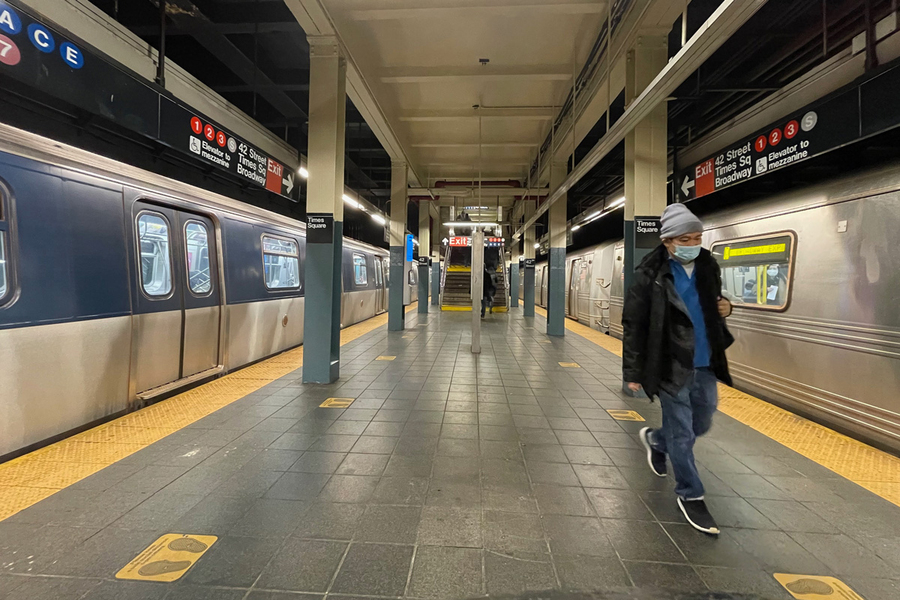
Previous image Next image
The prevalence of remote work since the start of the Covid-19 pandemic has significantly changed urban transportation patterns in the U.S., according to new study led by MIT researchers.
The research finds significant variation between the effects of remote work on vehicle miles driven and on mass-transit ridership across the U.S.
“A 1 percent decrease in onsite workers leads to a roughly 1 percent reduction in [automobile] vehicle miles driven, but a 2.3 percent reduction in mass transit ridership,” says Yunhan Zheng SM ’21, PhD ’24, an MIT postdoc who is co-author of a the study.
“This is one of the first studies that identifies the causal effect of remote work on vehicle miles traveled and transit ridership across the U.S.,” adds Jinhua Zhao, an MIT professor and another co-author of the paper.
By accounting for many of the nuances of the issue, across the lower 48 states and the District of Columbia as well as 217 metropolitan areas, the scholars believe they have arrived at a robust conclusion demonstrating the effects of working from home on larger mobility patterns.
The paper, “ Impacts of remote work on vehicle miles traveled and transit ridership in the USA ,” appears today in the journal Nature Cities . The authors are Zheng, a doctoral graduate of MIT’s Department of Civil and Environmental Engineering and a postdoc at the Singapore–MIT Alliance for Research and Technology (SMART); Shenhao Wang PhD ’20, an assistant professor at the University of Florida; Lun Liu, an assistant professor at Peking University; Jim Aloisi, a lecturer in MIT’s Department of Urban Studies and Planning (DUSP); and Zhao, the Professor of Cities and Transportation, founder of the MIT Mobility Initiative, and director of MIT’s JTL Urban Mobility Lab and Transit Lab.
The researchers gathered data on the prevalence of remote work from multiple sources, including Google location data, travel data from the U.S. Federal Highway Administration and the National Transit Database, and the monthly U.S. Survey of Working Arrangements and Attitudes (run jointly by Stanford University, the University of Chicago, ITAM, and MIT).
The study reveals significant variation among U.S. states when it comes to how much the rise of remote work has affected mileage driven.
“The impact of a 1 percent change in remote work on the reduction of vehicle miles traveled in New York state is only about one-quarter of that in Texas,” Zheng observes. “There is real variation there.”
At the same time, remote work has had the biggest effect on mass-transit revenues in places with widely used systems, with New York City, Chicago, San Francisco, Boston, and Philadelphia making up the top five hardest-hit metro areas.
The overall effect is surprisingly consistent over time, from early 2020 through late 2022.
“In terms of the temporal variation, we found that the effect is quite consistent across our whole study period,” Zheng says. “It’s not just significant in the early stage of the pandemic, when remote work was a necessity for many. The magnitude remains consistent into the later period, when many people have the flexibility to choose where they want to work. We think this may have long-term implications.”
Additionally, the study estimates the impact that still larger numbers of remote workers could have on the environment and mass transit.
“On a national basis, we estimate that a 10 percent decrease in the number of onsite workers compared to prepandemic levels will reduce the annual total vehicle-related CO2 emissions by 191.8 million metric tons,” Wang says.
The study also projects that across the 217 metropolitan areas in the study, a 10 percent decrease in the number of onsite workers, compared to prepandemic levels, would lead to an annual loss of 2.4 billion transit trips and $3.7 billion in fare revenue — equal to roughly 27 percent of the annual transit ridership and fare revenue in 2019.
“The substantial influence of remote work on transit ridership highlights the need for transit agencies to adapt their services accordingly, investing in services tailored to noncommuting trips and implementing more flexible schedules to better accommodate the new demand patterns,” Zhao says.
The research received support from the MIT Energy Initiative; the Barr Foundation; the National Research Foundation, Prime Minister’s Office, Singapore under its Campus for Research Excellence and Technological Enterprise program; the Research Opportunity Seed Fund 2023 from the University of Florida; and the Beijing Social Science Foundation.
Share this news article on:
Related links.
- JTL Urban Mobility Lab at MIT
- Department of Urban Studies and Planning
- Civil and Environmental Engineering
- School of Architecture and Planning
Related Topics
- Urban studies and planning
- Climate change
- Transportation
- Labor and jobs
Related Articles

3 Questions: Jinhua Zhao on a “third place” between home and office

Study: Commuting times stay constant even as distances change
Previous item Next item
More MIT News

A biomedical engineer pivots from human movement to women’s health
Read full story →

MIT tops among single-campus universities in US patents granted

A new way to detect radiation involving cheap ceramics

A crossroads for computing at MIT

Growing our donated organ supply

New AI method captures uncertainty in medical images
- More news on MIT News homepage →
Massachusetts Institute of Technology 77 Massachusetts Avenue, Cambridge, MA, USA
- Map (opens in new window)
- Events (opens in new window)
- People (opens in new window)
- Careers (opens in new window)
- Accessibility
- Social Media Hub
- MIT on Facebook
- MIT on YouTube
- MIT on Instagram
Moscow transport: metro, bus & taxi in Moscow | How does it work?
- August 15, 2023

Moscow transport: how does it work? Here we summarized all you need to know about Moscow city public transport (bus, metro, card Troika), but also taxi in Moscow.
Distances in Moscow: walking in Moscow
Walking. The geolocation of your accommodation in Moscow is important, because the distances are great. You’re definitely not going to be able to do it all on foot. Moscow is the largest city in Europe with more than 12 million intramural inhabitants. Besides, Moscow is made for giants, because everything is big: the avenues, the buildings, the metro stations! So, the place of your accommodation is very important. You can check our blog post: Where to stay in Moscow?
Good to know! We have written 2 other blog posts that could be helpful: Maps of Moscow and Moscow Airport Transfer.
Public transport in Moscow: prices and how does it work?
Even if you are going to be able to visit many interesting places around Red Square (see the article: Moscow Red Square ), you will certainly take the metro to get around, but also to see the most beautiful stations . Furthermore, among public transport the metro remains the fastest solution in Moscow.
Good to know! Public transport is free for children under the age of 7. More specifically, 1 adult may not purchase a ticket for 1 child under the age of 7. If you are 2 adults, it is therefore for 2 children that the trips will be free.
Tips for Moscow city transport
Here are my tips to make travel more pleasant and optimized:
- Avoid to take Moscow City transport during rush hours. Especially for ground transportation (lots of traffic jams). You will lose a lot of time, especially for city center trips by land transport. Peak hours correspond to office hours: the standard working day begins at 9 a.m. and ends at 6 p.m.
- Use a mobile application to estimate your journey time as accurately as possible. In Europe, as in Russia, we use CityMapper . It is a free application that allows you to calculate your trips and see all the possibilities to get from one place to another. For the application to work, you must have an Internet connection: either through your French package which can prove to be expensive; either by wifi, in your hotel, in a cafe (very common in Moscow) or by using the free Wi-Fi of the city of Moscow! To download CityMapper on your mobile, just type its name in AppStore or GooglePlay . Then choose the city where you want to use it.
- Buy a transportation card. If you plan to take public transport several times a day or if you come to Moscow for a university or work exchange, it is more economical to take a transport card. I talk about it later in the article.
- Further info about airport transfer here: How to get from airport to Moscow?
Moscow metro: the fastest way to get around Moscow
Beautiful! The Moscow Metro is considered the most beautiful in the world! You can find out which stations are worth a visit in my article: The most beautiful stations in Moscow .
Metro timetables. Times vary by station, but approximately the Moscow Metro is open from 5.30 a.m. to 1 a.m.
Below you can find a map of the Moscow metro, with an example of a metro station. You can find other Moscow maps here .

Metro prices in Moscow
- A single trip = 57 rubles (from February 1, 2020)
- Price for transporting a suitcase in the metro = 60 rubles
- With a transport card , the price of the journey decreases. Example: with the Troika card the price per trip increases to 40 rubles. More details about troika card below.
- You can also pay with ApplePay or GooglePay.
Where to buy metro tickets?
- At the cash desks , where you can buy everything: transport card or one-way tickets. Small flat: most of the time, the employees of the metro do not speak English very well. But they are used to it, you will be able to understand each other.
- At the English terminals , where you can also buy everything. See below for more details on terminal purchases.
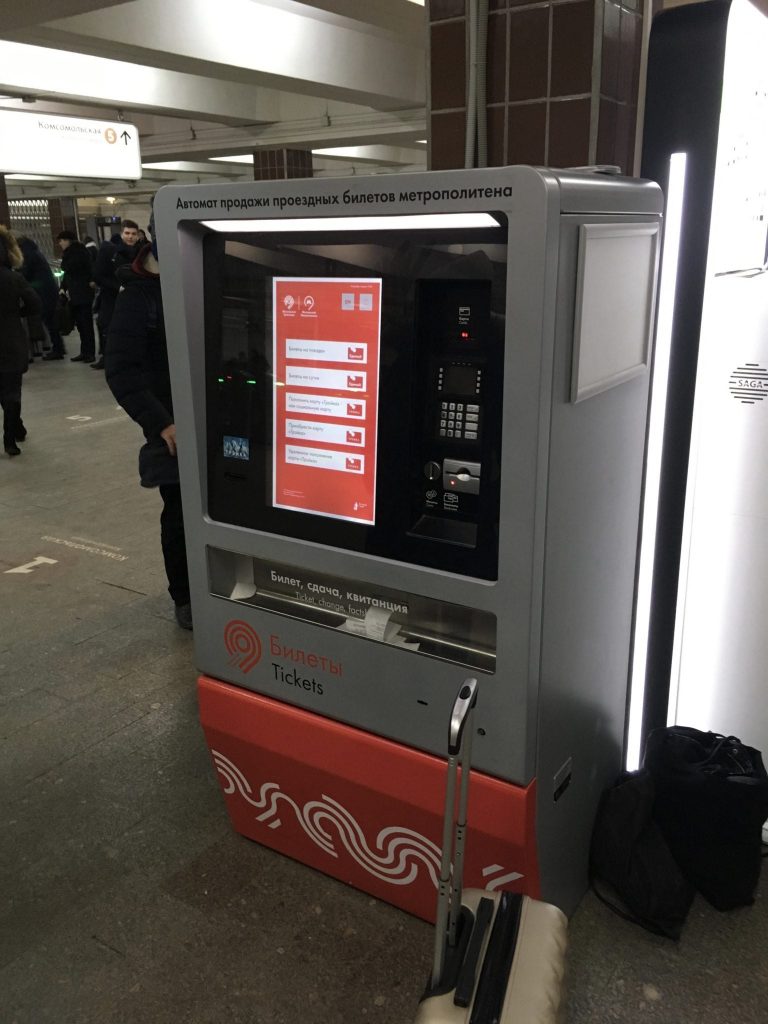
Bus, trolleybus, tram in Moscow
Avoid at peak hours. The city center can be literally blocked! Mobile applications are very useful to estimate travel times.
Tram. Trams are very nice to do. It’s a bit special. Tram stops are hard on the road. The cars then stop and let the pedestrians get on or off the tram.
Price of a bus, trolleybus or tram ticket
- One way = 57 rubles (from February 1, 2020)
- With a transport card , the price drops. Example: with the Troika card the price per trip increases to 40 rubles. More details about transport cards below.
Where to buy bus, trolleybus or tram tickets?
To drivers. There are no controllers on each bus, as in St. Petersburg.
By purchasing a transport card in advance at a metro station. There are few terminals installed near bus, tram or trolley stations.
Good to know! It is possible to pay on the metro, but also on buses with your smartphone or a contactless card (Apple Pay or Google Pay)! The price is 44 rubles per way. Beware, however, of bank charges, as for other ruble payments in Russia. See article: How to pay in Russia?
Transport cards in Moscow
Two most interesting solutions for taking Moscow City transport:


Troika card prices
- 1 metro, bus, trolley bus or tram journey: 40 rubles (instead of 57)
- 90 minutes in public transport (regardless of the number of changes): 62 rubles
How to buy a Troika card?
- Cost of purchase : 50 rubles. You can get it at all metro stations.
- Refill . Once the card is purchased, you must reload it. You can choose the amount freely.
- Where? It is possible to buy the card and recharge it at the metro cash desks or via automatic terminals, in cash or by bank card.
The Troika card is interesting if you:
- want to take advantage of lower transportation rates.
- stay in Moscow for a long time (language stays, expatriation, VIE, university exchange), but do not go for frequent daily trips.
- don’t stay long, but you know roughly how many trips you’re going to make or you don’t mind reloading the card often. Why? It is possible, but long and complicated to recover the initial amount of 50 rubles, as well as the rest on the card.
How much does the unlimited Yediny card (central Moscow area) cost?
- 1 day = 24 hours = 230 rubles
- 3 days = 438 rubles
- 30 days = 2170 rubles
- There are no unlimited cards for 2, 4, 5, 6 or 7 days.
More details: Moscow transport website
How to buy a Yediny card?
It is possible to buy the card and recharge it at the metro cash desks or via automatic terminals, in cash or by bank card. The card is activated (the countdown starts) at the time of validation and not at the time of purchase. The card must be activated within 10 days of purchase (day of purchase included).
Here are the pictures of the automatic terminal (in English), when buying a Yédiny card.

The Yediny card is interesting if you:
- stay in Moscow for a long time (language stays, expatriation, university exchange), but make frequent daily trips.
- do not stay in Moscow for a long time, but do not want to estimate your trips in advance (Troika card) while enjoying the unlimited.
Our experience with transport cards in Moscow
When I was working in Moscow, I used the Troika card. It was the most economical solution for me. We also used it later when we both went there. On the other hand, the last time we were there, we took the Yediny card and finally we found it more practical, even if it turned out to be less economical in the end.
Our verdict (compared to our travel habits): budget side, the Troika card is better. But for less headache (how much to put on the card? How much is left?…), The unlimited Yediny card is more practical.
Boat trips in Moscow
There are several boat trips on the Moskva River. In addition, it is even possible to buy an unlimited day ticket. For more information, you can then consult the article: Take a boat trip on the Moskva River.
Getting around in Moscow by taxi
There are several types of taxis in Moscow:
- First, official taxis (sign on the roof);
- Then individuals who do this out of the blue;
- And finally Moscow taxis via mobile applications (private drivers or taxi agencies).
Good to know. The cost of a taxi ride to the city center in Moscow is around 500 rubles. If you want to avoid negotiations, use the taxi apps in Moscow.
Uber Moscow: NO.
It works before, but not anymore, because Uber does not use the classic app in Russia (they have created a special app for Russia, only this app works now). So, you have to download the special Uber Russia app… but this application is only available on the Russian AppStore, so it cannot be downloaded for us. Uber’s competitors in Russia such as YandexTaxi or Gett can be used.
Use the YandexTaxi app to take a taxi in Moscow
The Yandex company is the Russian Google. Initially a search engine, it also offers several services. YandexTaxi is then the taxi service in Moscow, it works everywhere in Russia. You can download the app from the AppStore or GooglePlay . Thanks to this application, it is possible to pay the taxi in cash (by default) or by bank card directly (to be specified in the application). If you are thinking of paying in cash, then have rather small denominations so that the driver can give you change. The application is now in French.
How does YandexTaxi work?
- First, it detects your geolocation.
- Then you indicate your arrival position using the Latin or Cyrillic alphabet.
- It then offers you the estimated prices for each range (thrifty, business, etc.).
- You choose, confirm and wait for the driver to arrive.
- You identify the driver with the indicated license plate, then at the end YandexTaxi collects the race via your bank card (do not forget to put your card info before using the app, otherwise pay in cash).
Other solution. You can also book a taxi in advance on KiwiTaxi website . It’s easy!
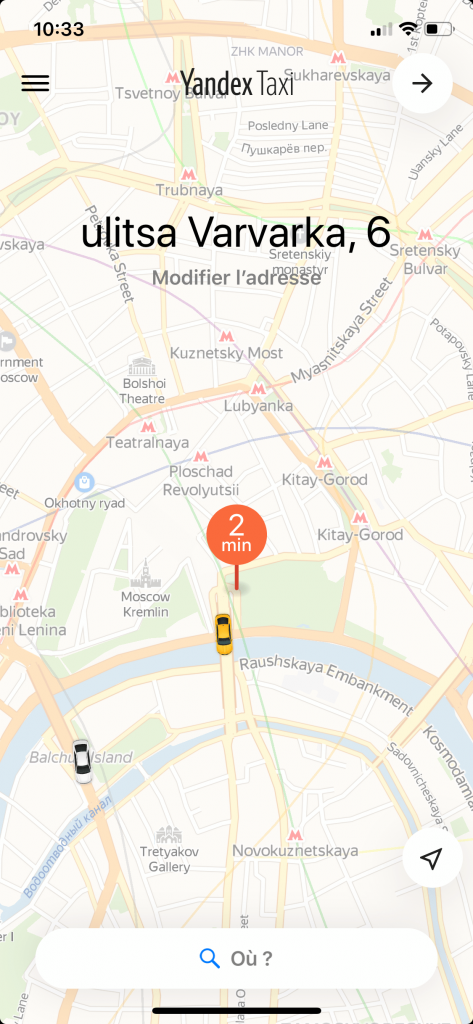
Public transport and taxi in Moscow: summary
Getting around Moscow is quite simple, as Moscow City transport is well developed. However, because of traffic jams, the metro is the quickest solution. It isn’t an issue, because the Moscow metro is very clean and beautiful. Taxis are rather cheap and easy to find thanks to mobile applications like, for example, YandexTaxi.
Moscow travel tips:
- Bolshoi Theater: how to buy tickets?
- Where to eat in Moscow?
- Where to stay in Moscow?
- How to get from airport to Moscow?
Top places to see in Moscow:
- What to visit in Kremlin?
- Red Square Moscow: everything you need to know
- Saint Basil’s Cathedral: tickets & what to see inside?
Leave a Reply Cancel reply
Your email address will not be published. Required fields are marked *
Save my name, email, and website in this browser for the next time I comment.
Mariinsky Theatre in Saint Petersburg: tickets, best places, dress code
Novodevichy convent and cemetery in moscow: tickets, cemetery map, you may also like.

Weekend in Moscow | What to do in Moscow for a long weekend?
- June 22, 2023

Christmas and New Year in Moscow: best markets and decorations to see
- September 18, 2023

Visit Moscow and St Petersburg in one week | Itinerary, cost, tips
- November 3, 2023

Things to do in Moscow: how to visit Moscow | Unmissable, cool & unusual
- September 2, 2023

- August 26, 2023

Bolshoi Theatre Moscow: how to buy tickets for Bolshoi theatre ballet?
- July 28, 2023
The 67-Hour Rule
Married couples are working as much as ever.

Listen to this article
Produced by ElevenLabs and News Over Audio (NOA) using AI narration.
This is Work in Progress, a newsletter by about work, technology, and how to solve some of America’s biggest problems. Sign up here .
One of the hard-and-fast laws of economics is that people in rich countries work less than their peers in poorer countries. The rule holds across nations. British and Japanese people work less on average than those in Mexico and India. It’s also true across history. Today, the typical American works about 1,200 fewer hours a year than he did in the late 19th century.
But something strange happens when we shift our attention from individual workers to households. In the 1880s, when men worked long days and women were mostly cut off from the workforce, the typical American married couple averaged just over 68 hours of weekly paid labor. In 1965, as men’s workdays contracted and women poured into the workforce, the typical American married couple averaged 67 hours of weekly paid labor—just one hour less. In the early 2000s, the typical American married couple averaged, you guessed it, almost exactly 67 hours of weekly paid labor. In 2020? Still 67 hours.
These figures come from two papers: “The Great Transition,” which covers labor-market changes since 1880, by the economists Jeremy Greenwood, Ricardo Marto, and Nezih Guner, and “Measuring Trends in Leisure,” which covers labor-market changes from 1965 to 2003, by the economists Mark Aguiar and Erik Hurst. There exists no perfect statistical time series to track work hours for married couples in the U.S. over the past 140 years. Sources do not always agree on precise figures, and over time dual earners may have averaged a little less or a little more than 67 hours exactly . And, of course, taking an average across many different industries is an extremely blunt measure. But as I read and reread these statistics, I was struck by the clear implication that married couples are working as much as ever.
That’s astonishing. After all, in the past 140 years, almost everything about the American economy has changed radically. In the 19th century, about half of the U.S. labor force worked in farming. By the 1940s, agriculture’s share of employment fell, and about a third of the country worked in manufacturing. Today, both sectors combined barely account for one in 10 American jobs. After all this, the average married couple in America still works about 67 hours a week. It is as if some god with an affinity for double-digit prime numbers descended from heaven and decreed that, no matter what seismic changes upended the world from one generation to the next, the average American family must labor for the same number of hours a week, for all of eternity.
So what explains the 67-Hour Rule? Any answer must begin with the fact that paid working hours have increased for women even as they have declined for men, for very different reasons.
In 1900, just 5 percent of married women held down a paid job. Instead, they typically put in a full 60-hour week at home, where basic upkeep was grueling by modern standards. Washing, drying, and ironing one load of laundry took up to seven hours, almost a full day’s work. By the mid-20th century, electricity had made possible a set of household technologies—the automatic washer and dryer, the refrigerator, the vacuum, and the dishwasher—that combined to reduce housework by 30 hours a week. Many women took advantage of those efficiencies (and shifting women’s-rights norms) to get a job. From 1880 to 1965, women’s labor-participation rate skyrocketed from about 5 to more than 40 percent; by the 1990s, six in 10 women were in the labor force. Meanwhile, housework hours kept falling. From 1965 to 2003, the average married woman reduced her “nonmarket” labor—cleaning, cooking, shopping, running errands—by 13 hours a week and redirected about nine of those hours toward paid work.
As married women worked less in the home and more outside of it, married men underwent an opposite shift. In 1880, 98 percent of men participated in the labor force, and the typical worker labored 10 hours a day, six days a week. Gradually, labor-rights protests and union strikes combined to pressure employers to shorten the workweek. In her paper “The Wage and the Length of the Work Day: From the 1890s to 1991,” the economist Dora Costa writes that state governments in the late 1800s and early 1900s moved to limit work hours through legislation. During World War I, the War Labor Board established an eight-hour workday for contractors. In 1938, President Franklin D. Roosevelt signed the Fair Labor Standards Act, which created a right to overtime pay for those who worked more than 40 hours a week.
Meanwhile, the widespread adoption of new technologies, including tractors and cars and, later, computers, made workers more productive in their shorter workdays. Men gradually used their extra time to take on more hours of chores, errands, and child care at home.
The 67-Hour Rule is, then, a reflection of increased efficiency. Fantastic news, in other words, especially for women. One study of women in rural areas without electricity in the 1940s found that hand-washing and ironing a 38-pound laundry load required taking about 6,300 steps around the house, the well, the stove, and back to the house. After nine such loads, a woman would have walked the equivalent of a marathon. The electrification of housework reduced the ambulatory burden of that same laundry load by 90 percent.
“It was a tremendous gain for women to be freed from housework and be able to join the labor force in exchange for a wage,” Marto wrote to me by email. “Most people would argue that is a good thing. My wife certainly does!” Household automation, combined with cultural and economic changes, freed women to work as they pleased. At the same time, labor laws shortened the typical workweek and outlawed child labor, while industrial technology increased productivity.
The economist Jeremy Greenwood is emphatic that the most important theme of the past 140 years of work in America has been the rise of leisure time. “Popular books like The Overworked American and More Work for Mother tell people that we’re doing more work than ever and have less leisure time than ever, but this is clearly false,” he told me. In fact, the decline of men’s paid work and women’s housework has freed up more leisure hours, even after accounting for the increase in child-care time. According to Aguiar and Hurst, leisure time increased in the second half of the 20th century for all groups they studied: men and women, singles and married couples.
But pointing out that men’s workweeks declined while women’s workweeks increased, and that both men and women have more leisure time, doesn’t fully explain why, together, they still labor as long as they used to outside the home more than 100 years ago.
Greenwood told me that, beyond rising efficiency, the 67-Hour Rule may also reflect rising costs and rising expectations. Americans are more productive than ever. But buying homes, raising kids, and caring for older family members are all more expensive than they used to be. (Prices for housing, medical care, and college have been rising faster than inflation for practically this entire century .) The typical home today is also larger than it used to be, and outfitted with a suite of technologies—air-conditioning, flatscreen televisions, dirt-cheap electric lighting—that would have flabbergasted an 1880s monarch.
Several factors determine why a married couple might work more or less in any given year. Laws shape the normal workweek, employers set schedules, and workers choose jobs based on diverse needs and preferences. Describing the average family is difficult because doing so requires glossing over large differences: Some households with five children get by with one working spouse, while some couples without children work long hours. But overall, millions of families across time have independently concluded that it takes about 67 hours to afford the essential features of a comfortable American life, as they define it. After all, if American families felt that they could be comfortable and happy by working only 15 hours a week, many more of them would do so.
The consistency of the workweek for married couples might also reflect a keeping-up-with-the-Joneses effect. As workers get raises, some of them could choose to work less. But richer economies also create new categories of desire: movies, amusement parks, electronics, travel, summer camps, Stanley water coolers. If people become envious of their peers’ rising standard of living, they’ll instead choose to continue working at higher wages to buy nicer stuff. Thus the hedonic treadmill sustains higher working hours and holds the 67-Hour Rule in place.
Why 67 instead of 60 or 70 or some other number? Again, other sources may not replicate that precise figure. More generally, my guess is as good as yours. Here I feel tempted to blame that prime-number god again.
At any rate, there is something a little disappointing about the possibility that married couples have the same market workweek that they did in 1880. I’m not the first writer to worry about the tragic ironies of the dual-earner household. In their book, The Two-Income Trap , Senator Elizabeth Warren and her daughter Amelia Warren Tyagi observed that the rise in household income in the late 1990s was driven by the rise in two-income households. Clearly, they acknowledged, this was progress. But when a household adds a second earner, they said, it creates additional expenses, especially for child care, which often consumes much of the additional income. Thus, many working parents with kids feel like they’re running in place rather than pooling their income to buy more comfort.
The overwork worrywarts are narrowly wrong: Americans really do have more leisure time than they used to. But they’re broadly right: Americans ought to have more leisure time than they have, and it is a little scandalous that they don’t.
- ALL MOSCOW TOURS
- Getting Russian Visa
- Top 10 Reasons To Go
- Things To Do In Moscow
- Sheremetyevo Airport
- Domodedovo Airport
- Vnukovo Airport
- Airports Transfer
- Layover in Moscow
- Best Moscow Hotels
- Best Moscow Hostels
- Art in Moscow
- Moscow Theatres
- Moscow Parks
- Free Attractions
- Walking Routes
- Sports in Moscow
- Shopping in Moscow
- The Moscow Metro
- Moscow Public Transport
- Taxi in Moscow
- Driving in Moscow
- Moscow Maps & Traffic
- Facts about Moscow – City Factsheet
- Expat Communities
- Groceries in Moscow
- Healthcare in Moscow
- Blogs about Moscow
- Flat Rentals
Transfer between Moscow airports
There are four airports in Moscow: Sheremetyevo, Domodedovo, Vnukovo and Zhukovsky. They are located in four different and distanced ends of the city. The airports are distanced not only from each other but from the city center as well. Therefore, the problem of getting quick and cheap transport to travel between airports is predominant. You should know two main means of transport to get from one airport to another or to the city center.
If your transfer in Moscow is between two airports, you should obtain Russian visa .
Transfer during the day (2 to 3 hours)

Three of four airports (Sheremetyevo, Domodedovo and Vnukovo) are connected to the city centre with Aeroexpress trains. Travel time to rail terminals is from 35 to 55 minutes. Both Aeroexpress and Moscow Metro work from 05:30 AM to 01:00 AM. Free Wi-Fi is available both inside the Aeroexpress train and in the Metro. To travel between Aeroexpress terminals you need to choose circle line (brown). All three terminals are connected with that line. Journey takes about 15 minutes.
You may also want to use a taxi between Aeroexpress terminals. All three Rail Terminals situated in the city center and the Garden Ring road ties them together, so traveling between most often should take no more than 20 minutes.
Transfer at night (1 hour)

Driving between airports takes nearly 1 hour at night. You may ask the driver to go through the city centre. The journey will take a little longer, but it’s a worth thing since Moscow looks stunning at night.
Taxi between airports costs about 2300 rub. (€23.09). If you finally decided to take a taxi, you should avoid touts operating in front of every arrival terminal. Better book or even prebook a car from the official taxi company listed here . Free Wi-Fi in alsmost every official taxi car.
Moscow Airports and Aeroexpress Terminals Locations
Please note that euro prices next to rouble ones in our guide are always based on today's rates.
Our private tours in moscow, all-in-one moscow essential private tour, moscow metro & stalin skyscrapers private tour, moscow art & design private tour, soviet moscow historical & heritage private tour, gastronomic moscow private tour, «day two» moscow private tour, layover in moscow tailor-made private tour, whole day in moscow private tour, tour guide jobs →.
Every year we host more and more private tours in English, Russian and other languages for travelers from all over the world. They need best service, amazing stories and deep history knowledge. If you want to become our guide, please write us.
Contact Info
+7 495 166-72-69
119019 Moscow, Russia, Filippovskiy per. 7, 1
Mon - Sun 10.00 - 18.00
- Skip to main content
- Keyboard shortcuts for audio player

Solar eclipse 2024: Follow the path of totality
Solar eclipse, what you need to know to watch monday's total solar eclipse.
The NPR Network
A stunning celestial event is visible across the country Monday, when the moon crosses directly in front of the sun: a total solar eclipse. For those in the path of totality, there will be a few brief moments when the moon completely covers the sun and the world becomes dark.
Traveling for totality? Skip ahead.
This will be the last chance to catch a total solar eclipse in the continental U.S. for about 20 years, so here's what you need to know to safely enjoy!
When is the eclipse?
April 8, 2024 there will be a total solar eclipse that crosses from the Pacific coast of Mexico through the United States.
What is totality and why it matters
According to NASA , totality will start around 11:07 a.m. PDT/1:07 EDT in Mexico and leave Maine at around 1:30 pm PDT/3:30 pm EDT.

Here's what time the eclipse will be visible in your region
Check out this table for when the partial eclipse and totality are visible in each region or check by zip code here.
A partial solar eclipse will be visible across the contiguous United States, so even if you're not directly in the path, you should be able to see something special, weather permitting.
Unable to get to totality? We'll be sharing highlights here from across the NPR Network throughout the day Monday if you can't see it in real time.
Where to see totality?
More than 30 million people live in the path of totality for Monday's eclipse, and many more in nearby areas.
Here's what we know about Monday's weather forecast.
Why totality matters
As NPR's Neil Greenfieldboyce explains , "During a total eclipse, the sky darkens suddenly and dramatically . The temperature drops. Stars come out. Beautiful colors appear around the horizon. And the once-familiar sun becomes a black void in the sky surrounded by the glowing corona — that's the ghostly white ring that is the sun's atmosphere."

Eclipse Science
For april's eclipse, going from 'meh' to 'omg' might mean just driving across town.
A partial eclipse, while still a fun experience, is hardly as dramatic. Those with a view of the partial eclipse will see crescent-shaped shadows like those seen here in 2017.
How to watch safely
If you plan to look directly at the eclipse (partial or totality), you're going to need eclipse glasses handy because looking directly at the sun without proper protection ( traditional sunglasses don't count! ) can be harmful to your eyes.

The perfect celestial soundtrack to the total solar eclipse
As NPR's Joe Hernandez explains, "Proper eye protection must be worn throughout a total solar eclipse — except for the roughly 3 1/2 to 4 minutes when the moon fully obscures the sun, a brief period known as 'totality.' (You will need to take your glasses off during totality to actually see it.)"
If you don't have access to eclipse glasses, you can get crafty with things you have around the house ( like some of us did back in 2017!) More on that here.
Traveling for totality?
The celestial event is driving a ton of domestic travel to the path of totality. If you're headed out of town to view the eclipse, here are some NPR Network resources for areas in the path of totality:
Texas The path of totality crosses through the Lone Star State, with some areas expecting a possible influx of visitors in the hundreds of thousands to catch prime viewing. Our member stations across the state have gathered local resources to help you navigate the region and the eclipse!
- San Antonio: Check out the latest from Texas Public Radio
- Dallas: Explore KERA's coverage for the latest
- Austin: Head to KUT for the best local resources
Arkansas The eclipse will be cutting through the state, putting Little Rock in the path of totality. Check out Little Rock Public Radio for local resources.
The southwestern edge of the state will be well-positioned to witness the total solar eclipse this year. Kentucky Public Radio is covering the eclipse throughout the region, from Kentuckiana eclipse mania to the University of Louisville's free class about the celestial event. Keep an eye on WKMS for the latest local updates.
Missouri The southeastern corner of the state will be in the path of totality, crossing across towns like Whitewater and Ste. Genevieve. Head to St. Louis Public Radio for local coverage and resources. Illinois Carbondale seems to have won the eclipse lottery, being in the path of totality both in 2017 and for this year's eclipse . For resources from across the state, check out Illinois Public Media .
Indiana A huge portion of the state will be within the path of totality, giving cities across Indiana, including Bloomington and Indianapolis, prime viewing of the eclipse.
- Bloomington: Check out Indiana Public Media
- Indianapolis: Head to WFYI for the latest
- Fort Wayne: Just north of the path of totality, WBOI has resources for the Allen County area
Ohio The Buckeye State is getting bisected by this year's path of totality, plunging a number of the state's most populous areas into darkness for a few minutes on Monday.
- Cleveland: Head to Ideastream Public Media for the latest.
- Columbus: With the capital city just south of totality, head to WOSU for regional resources.
- Cincinnati: Totality will just miss the border town. Here are some tips from WVXU on how to navigate the eclipse in the region.
Pennsylvania Only the northwestern-most corner of the state will catch totality, with views from the lakeside in Erie being particularly well-positioned for a stunning viewing experience. WESA has more from across the region.

Plan to watch the eclipse from a wild mountain summit? Be ready for harsh conditions
New York Buffalo, Rochester, Syracuse and Plattsburgh will fall under the path of totality on Monday. If you're planning to travel to the region for the best views, here are some local resources to stay safe and informed:
- Buffalo: Head to WBFO for the latest
- Syracuse: WAER has more on plans in the Salt City
- North Country: NCPR has the latest from across the region, as well as information on local viewing events to check out
Vermont The Green Mountain State will see totality across its most populous region, including Burlington and Montpelier, as well as the Northeast Kingdom on the Canadian border. Vermont Public has everything you need to know to navigate your time in the region to enjoy the eclipse safely. New Hampshire The northernmost region of the Granite State will be in the path of totality, providing prime viewing to those in Coos County. NHPR has info on local events, travel updates as well as special coverage with New Hampshire Public Television. Maine The last state in the path of totality in the U.S., much of Northern Maine will be positioned for prime viewing. The rural region is preparing for an influx of visitors, and safety officials are encouraging visitors and locals alike to be prepared. Maine Public will be covering the eclipse and has everything you need to know to navigate the region safely.
How to document the eclipse safely
With the ease of cell photography , it can be tempting to reach for your phone to document the eclipse and the moments of totality, but make sure to do so safely.
As NPR's Scott Neuman explains , "For starters, you'll need to wear eclipse glasses or similar protective eye gear while aiming your camera or even just observing the eclipse."
Feeling ambitious? Here are a few more tips.
Or if you're not inclined to capture the moment visually, you lean into some other forms of creative expression. Indiana, for example, has named Linda Neal Reising the official poet in the state for this year's eclipse.
As former NPR reporter and eclipse superfan David Baron shared with Life Kit , viewing totality "[is] like you've left the solar system and are looking back from some other world."
So consider focusing on being present in the moment to enjoy the celestial spectacle.
More resources to enjoy the eclipse
- Sharing the eclipse with tiny humans? Check out these kid-friendly total solar eclipse learning guides from Vermont Public's But Why, and this great explainer from KERA Kids on the difference between a solar and a lunar eclipse.
- Want to see how a solar eclipse alters colors? Wear red and green on Monday
- Plan to wander into the wild for the best view? Here are some tips from outdoor experts.
- Tips from Bill Nye on the best ways to enjoy the eclipse.
NPR will be sharing highlights here from across the NPR Network throughout the day Monday if you're unable to get out and see it in real time. NPR's Emily Alfin Johnson compiled these resources.
- 2024 eclipse
The one thing you'll want to do is the only thing not to do while driving during solar eclipse

The 2024 solar eclipse will shroud much of the United States in darkness on Monday, leaving many people to wonder: Is it safe to drive during the celestial event?
We know Americans should wear certified eclipse glasses when looking directly at the eclipse. And millions of Americans are in the eclipse's path of totality , the moment that occurs when the moon completely blocks the sun's light from reaching us. During totality, the eclipse can be viewed with the naked eye.
The eclipse will begin in Texas at 1:27 p.m. CDT and end in Maine at 3:35 p.m. EDT, but the exact time of the eclipse varies by where you are in its path. If you plan to drive during this time, you may not only have to contend with traffic , but need to take steps to stay safe.
Here's what to know about driving during the eclipse.
Where to get free solar eclipse glasses: Libraries, Warby Parker and more giving glasses away
Is it safe to drive during an eclipse?
It's safe to drive during an eclipse as long as you don't look up at the sky. AAA is telling drivers to be focused on the road if they are operating a car during the total solar eclipse.
"Anyone operating a vehicle should not be attempting to look up at the sky during the eclipse – their eyes should be on the road," said Aixa Diaz, a spokeswoman from AAA.
The automobile insurance company is advising Americans who want to safely view the total eclipse to "find a safe place to park (not on the side of a road or highway) away from other traffic and then wear your eclipse glasses," Diaz said.
Do not wear eclipse glasses while driving
It should go without saying, but authorities are also reminding people to not drive while wearing eclipse glasses .
The Missouri and Texas departments of transportation are both advising drivers to not wear eclipse glasses during the natural phenomenon and to focus on the road.
"Do not wear eclipse glasses while driving," reads a list of safety tips from the Texas department. Thousands people are expected to drive to towns along the path of totality, including Dallas, ahead of the eclipse.
Several state transportation departments released similar warnings ahead of the 2017 total solar eclipse. Wyoming's, for example, warned people traveling to the state about how they wouldn't be able to see the road with solar eclipse glasses on.
"When the glasses are worn, a person shouldn’t be able to see anything except the solar eclipse, which is why it is unsafe for a person to wear them when driving," the warning reads.
"Eclipse glasses are for eclipse viewing, not driving. They shouldn’t be treated like normal sunglasses," Diaz said.

Simple Family Preparedness
The Top 24 States to Avoid for Work
Posted: March 12, 2024 | Last updated: March 12, 2024

Work is stressful for a lot of us, with increasing pressure to do more in less time, to work after hours, and to go above and beyond. And even if you resist that pressure, the stress of standing your ground and protecting your boundaries is exhausting, too. Burnout is awful. It’s bad for your and for your employers. Based on employee satisfaction index scores for income, employee turnover, sick days, commute time, average working hours, workplace safety, and paid time off, as well as other factors, here are the worst 24 states to work in.

Georgia is the worst-performing state, with an average commute time of 28.7 minutes. It has an overall job satisfaction score of 29.62. The state’s quitting rate is the highest at 3.6%, ranking it poorly on happiness and employee retention metrics.

This state has one of the unhappiest workforces in the US. With an overall job satisfaction rate of 30.36, Texas poses devastating challenges for employees, with more than 500 fatal workplace injuries yearly. It has the second-longest working week with an average of 43.6 hours, raising questions about work-life balance.

Employees earn an annual income of $38,470 with an average hourly wage of $18. This rate is alarming when compared to Alaska’s $32. With a lengthy work week of 41.5 hours and a lack of PTO (paid time off) laws, Florida ranks high on this list with a total job satisfaction rate of 30.46.

4. New York
The Big Apple is notorious for its lengthy commute and boasts the most extended duration of 33.5 minutes. While the average annual income of $52,470 is the third-highest in the country, the state falls behind on safety. With a high injury rate, New York was responsible for 247 fatal injuries in the past year. Hence, the overall satisfaction score is 31.51.

5. South Carolina
South Carolina has a high quit rate of 3.1% and ranks poorly on overall state happiness with an employee satisfaction score of 31.65. The annual income is $38,870, $13,000 less than Alaska, the state with the happiest employees.

6. Pennsylvania
Pennsylvania has one of the lowest levels of job satisfaction in the country. With a poor satisfaction score of 33.26, it falls below the national average. The Keystone State is a bad choice for job-hunting due to its high unemployment rates.

Alabama is high on this list, with one of the unhappiest employees in the country. It has a low satisfaction rate of 32.68 due to low inclusiveness and poor health reforms. Moreover, its poor worker protection laws make it an unsafe state for employees.

8. Virginia
Virginia has a low employee satisfaction rate of 33.26. Due to its worker protection and law enforcement, the state struggles to come through with its unemployment insurance program, which has been particularly concerning since the layoffs during the pandemic.

9. New Jersey
New Jersey scores on the top ten list of worst states for employees, with a low satisfaction score of 34.09. With a median hourly wage of $24.56, employees struggle to be well-compensated for their work.

10. New Mexico
With an employee satisfaction score of 34.25, New Mexico is the tenth worst state to work in. The law pay is unpromising and not in line with the experience of many employees. Poor management and legal protection make this state an unappealing choice for professional prospects.

11. Delaware
With an average employee satisfaction rate of 34.60, Delaware offers easily one of the least conducive environments for professionals. Many employees complain about the lack of flexibility as the work-from-home option is unavailable in most occupations.

12. Kentucky
Kentucky has one of the least satisfied workers, with a total satisfaction of 35.07. The state is a troublesome option for finding a job. The low median annual income and poor job security make this state one of the worst in terms of economic environment.

Idaho makes it to the list with an employee satisfaction rate of 35.45. What’s particularly alarming is the state’s poor working conditions for women. Working moms find employment in Idaho particularly difficult due to poor childcare policies.

14. Tennessee
With recent laws showing the state’s discriminatory tendencies, few employees find it an inclusive workplace. With a score of 35.87, employee dissatisfaction may be attributed to the state’s political and legal reforms.

15. Michigan
The state is notorious for its concerning work policies, such as the right-to-work law, taking away choices from employees. This political history can explain why Michigan’s unhappy workers have given it a 35.88 score.
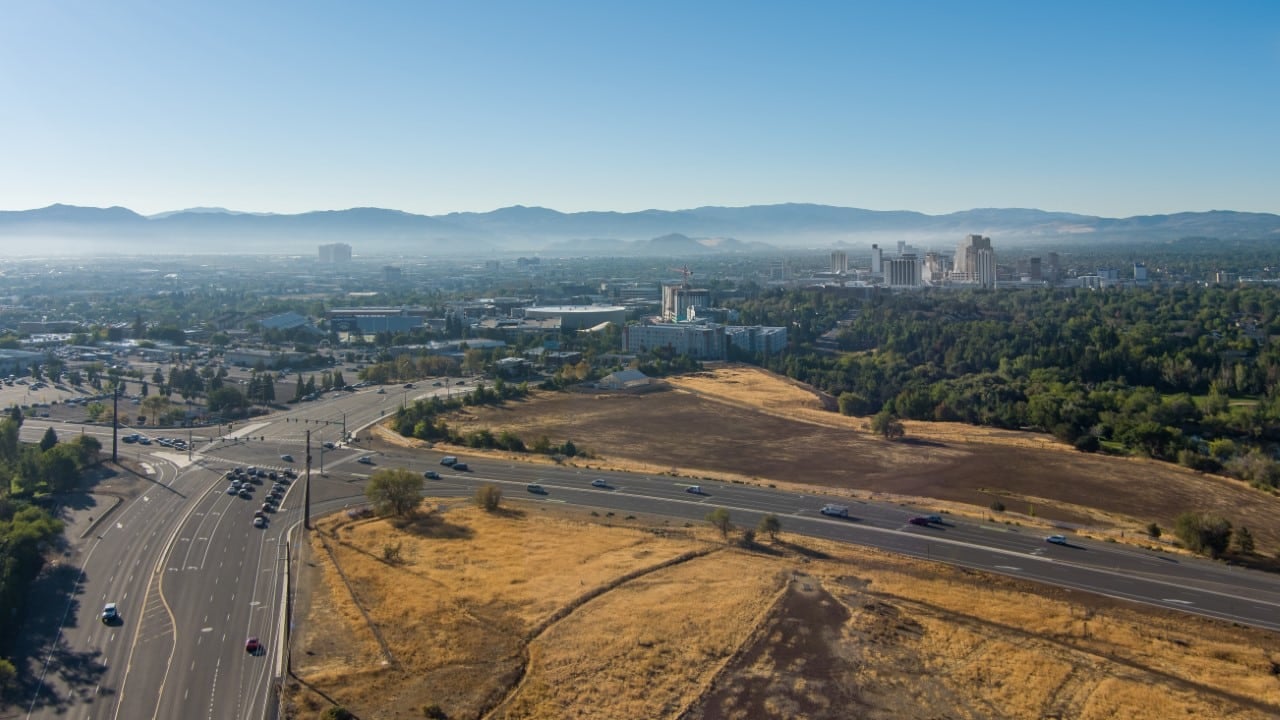
With a score of 36.06, this Western U.S. state has left many professionals and job-seekers dissatisfied with its high unemployment rates. Considering the high cost of living, having a comfortable lifestyle with a modest wage is difficult.
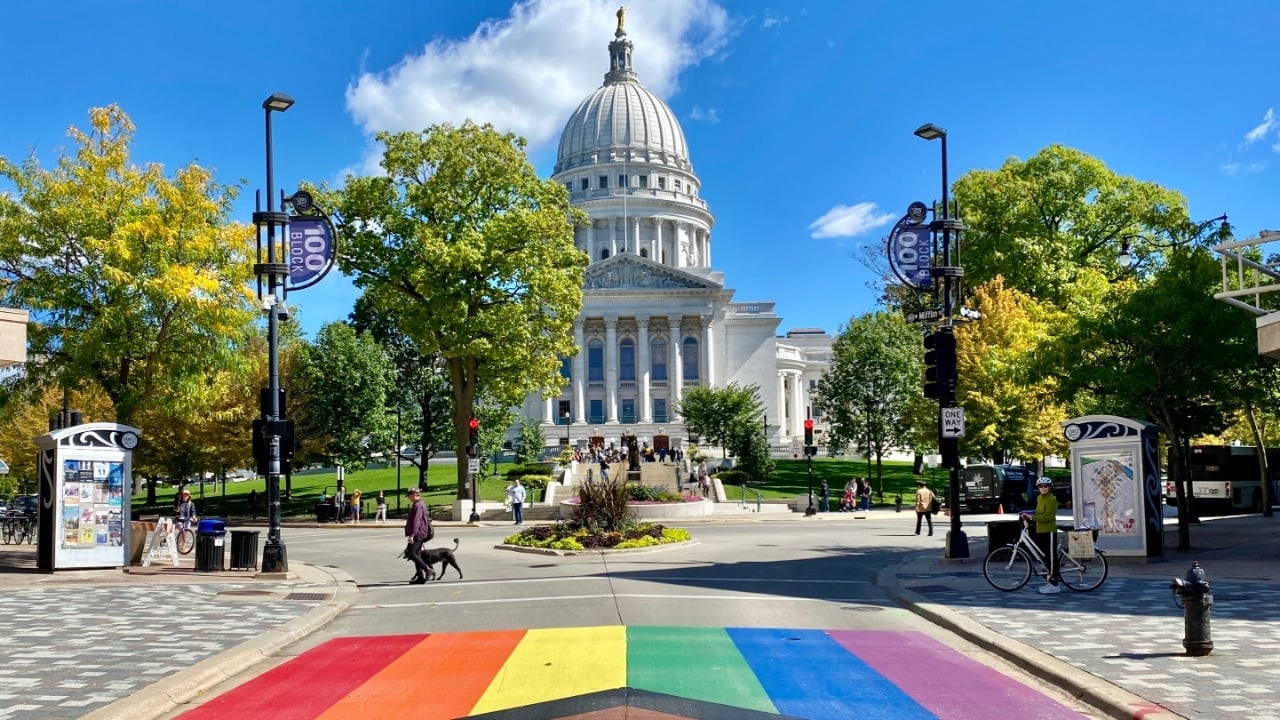
17. Wisconsin
While the state has a decent average income, the wage disparity is too significant to be ignored. Wisconsin is also a costly state for those wishing to set up a business, thus explaining the 36.49 satisfaction score.

18. Arkansas
With a score of 36.58, Arkansas is among the worst states for jobs, thanks to high unemployment rates. The Natural State is also plagued with social problems such as crime and inadequate healthcare.

19. New Hampshire
Though the state doesn’t impose an income tax on earned income, it isn’t entirely tax-free. A 5% tax is paid on income from interest and dividends. Similarly, property taxes are high, making it less ideal for those seeking to settle down for work. The state scores 36.64 on satisfaction.

20. Montana
The state isn’t as bad as others on this list regarding work options and flexibility, hence earning it a score of 36.97. However, many find the pay to be less than adequate for some sectors, making it a less-preferred state.

21. South Dakota
Though the state doesn’t struggle with unemployment like many others, it falls short on compensation and options. With a score of 37.24, many find that most jobs in the state are low or unskilled labor with low wages.

22. Mississippi
Mississippi falls below the national average of job satisfaction with a score of 37.58. There are few opportunities for skilled workers, and much of the state’s workforce is among the country’s least educated. The low concentration of STEM workers also makes it less attractive for job-seekers.

23. North Carolina
The state’s poor labor laws, low worker protection, and lack of unemployment benefits earn it a spot on this list with a satisfaction score of 38.95. The minimum wage stands at $7.25, the same as Georgia.

24. Missouri
With a satisfaction score of 39.34, The Show Me State is bad for work and living due to its politics . The state’s stance on voting, reproductive rights, and high crime rates make it less appealing for professionals. Source: (SelectSoftware Reviews) .

20 Crucial Supplies for Surviving a Societal Collapse
In the face of uncertainty, being well-prepared gives you at least some degree of control and security. The thought of a societal collapse, while extreme, prompts us to consider how we might endure without the conveniences of our current lifestyle. Here’s a list of 20 essential items that could prove indispensable in such a scenario. This guide isn’t about succumbing to fear but embracing preparedness and resilience.
- Read More: 20 Crucial Supplies for Surviving a Societal Collapse

14 Essential Canned Goods for Your Emergency Pantry
I firmly believe in keeping a well-stocked emergency pantry. While fresh food is ideal, in a survival situation, we may not be that lucky. So, for my family, even though we grow a lot of our own food, canned goods play a crucial role in emergency preparedness. They offer a reliable source of nutrition when access to fresh produce may be limited. The goods you stockpile should be affordable, easy to store, and full of nutrition.
- Read More: 14 Essential Canned Goods for Your Emergency Pantry

Best Regions in the U.S. to Escape to When Society Collapses
Choosing a refuge in the event of societal collapse involves weighing the pros and cons of each location against your personal preparedness goals and abilities. Whether you’re drawn to the solitude of the desert or the protective heights of the mountains, the key is finding a place that offers safety and the opportunity for growth and renewal.
- Read More: Best Regions In the U.S. to Escape to in a Societal Collapse
Moer from Simple Family Preparedness
- 24 Worst Mistakes Made by Rookie Preppers
- 24 TEOTWAWKI Bartering Items That Could Save Your Life
More for You
This Is How Long You Can Leave Butter On the Counter, According to Land O'Lakes
Guest-list style at the White House State Dinner
30 trans celebrities who broke barriers
Park Boram, K-Pop Singer and ‘Superstar K2' Competitor, Dies at 30
Peanuts by Charles Schulz
13 Menu Items McDonald's Employees Refuse To Order
The Dumbest Things You Can Do With Your Money
Parents who raise successful, resilient kids never do these 5 things, experts say
Tech trick: How to tell who’s calling when you don’t recognize the phone number
The best recipe for a tasty sandwich on National Grilled Cheese Day starts with great bread
Tech Giant With 30,000 Employees Has No Return-to-Office Policy
Why this prototype combat rig could help Army soldiers fight a possible war with China
Pittsburgh Steelers 2024 NFL draft picks: Full list by round
4-Year-Old Living With One of the Rarest Disorders in the World
Dr. Phil shuts down DEI guest advocating 'equality of outcome:' 'Been tried, didn't work, called Marxism'
Gold prices hit a record high. What's behind the surge?
Burger King's menu adds a new twist on a British classic
27 Lazy Day Slow Cooker Recipes
Are There Any B-36 Bombers Still Flying?
Barehanded Backflip Catch in Banana Ball by D.R. Meadows
- Moscow Tourism
- Moscow Hotels
- Moscow Bed and Breakfast
- Moscow Vacation Rentals
- Flights to Moscow
- Moscow Restaurants
- Things to Do in Moscow
- Moscow Travel Forum
- Moscow Photos
- All Moscow Hotels
- Moscow Hotel Deals
- Things to Do
- Restaurants
- Vacation Rentals
- Travel Stories
- Rental Cars
- Add a Place
- Travel Forum
- Travelers' Choice
- Help Center
Taxi travel time from Moscow city center to Sheremetyevo - Moscow Forum
- Europe
- Russia
- Central Russia
- Moscow
Taxi travel time from Moscow city center to Sheremetyevo
- United States Forums
- Europe Forums
- Canada Forums
- Asia Forums
- Central America Forums
- Africa Forums
- Caribbean Forums
- Mexico Forums
- South Pacific Forums
- South America Forums
- Middle East Forums
- Honeymoons and Romance
- Business Travel
- Train Travel
- Traveling With Disabilities
- Tripadvisor Support
- Solo Travel
- Bargain Travel
- Timeshares / Vacation Rentals
- Central Russia forums
- Moscow forum

This post has been removed at the author's request.

If you leave center at 12 you will be at SVO at 13 or even earlier
the hotel receptionist may help you to choose the best time

This topic has been closed to new posts due to inactivity.
- Planning trip to Russia Apr 09, 2024
- SIM card. Russian SIM cards, do they still work in the UK? Apr 09, 2024
- Train Booking Moscow to St. Peter Mar 29, 2024
- Union Pay debit card Mar 27, 2024
- Russian trying to book a hotel in Jerusalem Mar 14, 2024
- Dual Citizen Arrested in Russia Mar 12, 2024
- about clothes Feb 27, 2024
- NOTE - border crossing from Finland into Russia closed Feb 09, 2024
- Snow boots in Red Square Feb 04, 2024
- Travelling to Moscow & Murmansk with toddle in winter Feb 02, 2024
- Anyone traveling from London to Moscow this week ? Jan 27, 2024
- Booking accommodation Jan 11, 2024
- Traveling friends (Designers preferred) :) Jan 05, 2024
- Are shops and things closed during Christmas and New Week ? Dec 15, 2023
- Moscow to St Petersburg train or air?? 32 replies
- New Sapsan Express Train from Moscow to St Petersburg 18 replies
- New year's in moscow 8 replies
- Hop on Hop Off Bus Tour 5 replies
- How do you purchase Bolshoi Ballet tickets at a great price? 2 replies
- Select-a-room.com Are they legitimate? 3 replies
- Weather Moscow and St. petersburg in May 8 replies
- Night train to St Petersburg 3 replies
- ATM Access 12 replies
- Visa needed if on layover at Moscow Airport??????? 15 replies
- Where can I get initial answers to ANY question?
- Weird But True
- Sex & Relationships
- Viral Trends
- Human Interest
- Fashion & Beauty
- Food & Drink
- Health Care
- Men’s Health
- Women’s Health
- Mental Health
- Health & Wellness Products
- Personal Care Products
trending now in Lifestyle

Women's butt sizes around the world revealed — which countries...

Taco Bell execs reveal what they order nearly every day: 'It will...

We're addicted to naked cruises and have already spent $40K —...

Dad of 3 kids who were allegedly killed by mom running Boston...

I saved $1,700 eating leftover food from NYC's top restaurants...

Famed Italian designer dead at 83: 'A beacon of inspiration for...

Huge myth about exercise finally debunked

NYC mom fined for letting 4-year-old pee in park: ‘Absolutely...
Working odd hours could impact health decades later, study.
- View Author Archive
- Follow on Twitter
- Get author RSS feed
Thanks for contacting us. We've received your submission.
Although many people cringe at the idea of waking up early for work, researchers deem morning shifts are better for employees compared to working at night.
A study published in Plos One journal revealed that irregular work schedules can negatively impact your health.
The journal defined a “standard” work schedule as work beginning at 6 a.m. or later and ending by 6 p.m.,” unlike a volatile schedule starting “at 2 p.m. or later and ending by midnight.”

Researchers studied 7,000 people over 30 years, from ages 22 to 50, to determine whether work patterns involving sleep, physical and mental health were impacted in young adults when they reached 50.
Wen-Jui Han, a New York University professor who led the study, revealed that people who worked unconventional hours experienced more health issues.
“This has repercussions. People with work patterns involving any degree of volatility and variability were more likely to have fewer hours of sleep per day, lower sleep quality, lower physical and mental functions and a higher likelihood of reporting poor health and depressive symptoms at age 50 than those with stable work schedules,” Han told the Daily Mail .
Researchers found that young adults who maintained a consistent work schedule but transitioned into more unsustainable work hours in their 30s had concerning results such as health scares of cardiovascular disease and anxiety.
Health issues stemming from severe sleep deprivation and low sleep quality due to nonstandard work schedules have been labeled Shift Work Sleep Disorder, researchers noted.
“Volatile work patterns might be a chronic stressor in our life,” Han added.

The professor explained that employees who worked odd hours had a ‘significantly higher’ likelihood of poor health even over those who were unemployed.
Socioeconomics also plays a role in work patterns, so researchers used gender, race and education to determine the social status of employees who work day and night.

And unfortunately, minority groups, who are disproportionately negatively affected, often face the stress of untraditional work hours and experiencing health issues.
“The higher share of African Americans with jobs requiring nonstandard schedules than their counterparts does not help and may indeed further intensify the high prevalence of sleep issues among people of color,” the study revealed.
Many people spend most of their days at work, so they should consider jobs that allow them to work hours that accommodate their schedule and prioritize health. Because eventually, the unconventional shifts could lead to health risks.
Share this article:

Advertisement
Your last-minute guide to Monday's total solar eclipse

A total solar eclipse will cross North America on Monday , offering millions a rare opportunity to see afternoon skies temporarily darken as the moon blocks the face of the sun.
Tune into NBC News NOW as Lester Holt hosts a two-hour special at 2 p.m. ET Monday from Indianapolis Motor Speedway.
The eclipse's path fortuitously cuts across Mexico, 15 U.S. states and a small part of eastern Canada. In all other states in the continental U.S., viewers will be treated to a partial solar eclipse, with the moon appearing to take a bite out of the sun and obscuring part of its light.
Here’s everything you need to know about the rare celestial event.
What is a solar eclipse?
Solar eclipses occur when the sun, moon and Earth align. The moon passes between Earth and sun, temporarily blocking the sun’s light and casting a shadow on Earth.
A total solar eclipse is when the moon fully obscures the sun, whereas a partial solar eclipse means it blocks just a portion of the sun’s face.
Solar eclipses occur only with the new moon. Because the moon’s orbit around Earth is tilted, the three bodies don’t always line up in a way that creates an eclipse.
“Imagine if the moon’s orbit were in the plane of Earth’s orbit around the sun — if that were the case, then every new moon, you’d have a total solar eclipse and every full moon, you’d have a lunar eclipse,” Neil DeGrasse Tyson, director of the Hayden Planetarium at the American Museum of Natural History, told NBC News. “So, because things don’t always align, it lends to the rarity of the event and the specialness of the event.”
Where and when will the eclipse be visible?
This year’s eclipse will follow a slightly wider path over more populated areas of the continental U.S. than other total solar eclipses have in the recent past.
NASA estimates that 31.6 million people live within what’s known as the path of totality, where the total solar eclipse will be visible. An additional 150 million people live within 200 miles of the path, according to the agency.
The path travels through Texas, Oklahoma, Arkansas, Missouri, Illinois, Kentucky, Indiana, Ohio, Pennsylvania, New York, Vermont, New Hampshire and Maine. Tiny parts of Michigan and Tennessee will also be able to witness totality if conditions are clear.
After the eclipse crosses into Canada, it will pass over southern Ontario, Quebec, New Brunswick, Prince Edward Island and Cape Breton, at the eastern end of Nova Scotia.
Those outside the path of totality can still take part in the astronomical event by viewing a partial solar eclipse — visible throughout all 48 states of the contiguous U.S. — or a NASA livestream.
The timing, including how long totality lasts, depends on the location, but some spots will see the moon fully cover the sun for up to 4 minutes and 28 seconds.
Below is a list of timings for some cities along the path of totality, as provided by NASA . A number of other resources, including NationalEclipse.com and TimeandDate.com , can also help people plan.
- Dallas: Partial eclipse begins at 12:23 p.m. CT and totality at 1:40 p.m.
- Little Rock, Arkansas: Partial eclipse begins at 12:33 p.m. CT and totality at 1:51 p.m.
- Cleveland: Partial eclipse begins at 1:59 p.m. ET and totality at 3:13 p.m.
- Buffalo, New York: Partial eclipse begins at 2:04 p.m. ET and totality at 3:18 p.m.
- Lancaster, New Hampshire: Partial eclipse begins at 2:16 p.m. ET and totality at 3:27 p.m.

How to safely view a solar eclipse
It is never safe to gaze directly at the sun, even when it is partly or mostly covered by the moon. Special eclipse glasses or pinhole projectors are required to safely view solar eclipses and prevent eye damage. Failing to take the proper precautions can result in severe eye injury, according to NASA .
Eclipse glasses are thousands of times darker than normal sunglasses and specially made to enable wearers to look at the sun during these kinds of celestial events.
Sky-watchers should also never view any part of the sun through binoculars, telescopes or camera lenses unless they have specific solar filters attached. Eclipse glasses should not be used with these devices, as they will not provide adequate protection.
However, during the few minutes of totality, when the moon is fully blocking the sun, it is safe to look with the naked eye.

Beware of fake eclipse glasses. On legitimate pairs, the lenses should have a silver appearance on the front and be black on the inside. The manufacturer’s name and address should be clearly labeled, and they should not be torn or punctured. Check, as well, for the ISO logo and the code “IS 12312-2” printed on the inside.
If you don’t have eclipse glasses, you can make a homemade pinhole projector, which lets sunlight in through a small hole, focuses it and projects it onto a piece of paper, wall or other surface to create an image of the sun that is safe to look at.
All you need is two pieces of white cardboard or plain white paper, aluminum foil and a pin or thumbtack. Cut a 1- to 2-inch square or rectangle out of the center of a piece of white paper or cardboard. Tape aluminum foil over that cut-out shape, then use a pin or thumbtack to poke a tiny hole in the foil.
During the eclipse, place a second piece of white paper or cardboard on the ground as a screen and hold the projector with the foil facing up and your back to the sun. Adjusting how far you hold the projector from the second piece of paper will alter the size of the image on the makeshift screen.
What to look for while viewing the total solar eclipse
For people along the path of totality, there are some fun milestones to keep track of as the total solar eclipse unfolds.
As the eclipse progresses and the sun gets thinner in the sky, it will start to get eerily dark, according to Tyson.

When the last beams of sunlight are about to become obscured, look out for the “diamond ring effect”: The sun’s atmosphere will appear as an illuminated halo, and the last light still visible will look like the diamond of a giant ring.
As the sunlight decreases even further, an effect known as Baily’s beads will be created by the moon’s rugged terrain. Tiny “beads” of light will be visible for only a few seconds around the dark moon, as the last bits of sunlight peer through the moon’s mountains and valleys.
When the moon is fully blocking the sun, it is safe to remove eclipse glasses and look at the total solar eclipse with the naked eye.

Some lucky sky-watchers may even catch a glimpse of a comet .
Comet 12P/Pons-Brooks — nicknamed the “ devil comet ” because an eruption last year left it with two distinct trails of gas and ice in the shape of devil horns — is currently visible from the Northern Hemisphere as it swings through the inner solar system.
The comet can be seen in the early evenings by gazing toward the west-northwest horizon. During the eclipse, when skies darken during totality, it may be possible to see the comet near Jupiter, but its visibility will depend on whether it’s in the middle of an outburst and thus brighter than normal.
Most likely, all eyes will be on the alignment of the moon and sun.
“Most people won’t even notice,” Tyson said. “But if you know to look, it’s there.”
When is the next solar eclipse?
The next total solar eclipse will be in 2026, but it will mostly pass over the Arctic Ocean, with some visibility in Greenland, Iceland, Portugal and northern Spain. In 2027, a total solar eclipse will be visible in Spain and a swath of northern Africa.
The next total solar eclipse visible from North America will be in 2033, but only over Alaska. Then in 2044, a total solar eclipse will cross Montana, North Dakota, South Dakota, parts of Canada and Greenland.
The next total solar eclipse to cross the continental U.S. coast-to-coast in will occur in 2045. The path of totality for that eclipse will cut through California, Nevada, Utah, Colorado, New Mexico, Oklahoma, Kansas, Texas, Arkansas, Missouri, Mississippi, Louisiana, Alabama, Georgia and Florida.
Denise Chow is a reporter for NBC News Science focused on general science and climate change.
Lucas Thompson is a content producer for the NBC News Climate Unit.
- Plan a Road Trip
- Plan a Flight
- Find an Airport
- Where to Stay
- All Questions
Distance between Seattle and Moscow
Flying non-stop from seattle to moscow.
How far is Moscow from Seattle? Here's the quick answer if you have a private jet and you can fly in the fastest possible straight line.
Flight distance: 5,218 miles or 8397 km
Flight time: 10 hours, 56 minutes
Because of the curvature of the Earth, the shortest distance is actually the "great circle" distance, or "as the crow flies" which is calculated using an iterative Vincenty formula. For a long distance, this appears as a curve on the map, and this is often the route that commercial airlines will take so it's a good estimate of the frequent flyer miles you'll accumulate as well.
This is a fairly long flight, so unless you have a Gulfstream G650 or your own Boeing or Airbus, you might be booking a commercial flight. In that case, your travel time would really need to include how many minutes to get to your local airport, wait for security, board and taxi on the runway, land at the other airport, and get to your destination. Scroll down to see a more realistic calculation that takes into account all these factors to get a more accurate estimate of your actual flight time .
Seattle to Moscow airports and flights
In the quick calculation above, we assumed you had a private plane and just wanted to know the time in the air from city to city. But for most of us, we're going to be flying on a commercial airline (whether it's first class or coach). So that means we really need to account for all the extra travel time getting to the airport, waiting for our flight, and making it to the destination.
To give you a better estimate of real-life travel, we've put together a flight itinerary with actual airports. Eventually you'll be able to customize this plan, choosing your own airports and flights. But for now, here's an example we've selected to give you an idea of how traveling might work between airports.
Departure airport: Seattle-Tacoma International Airport (SEA)
Arrival airport: Moscow Domodedovo Airport (DME)
With the airports selected, we can estimate the travel time to and from the airport, based on how far the airport is from downtown.
Getting to the airport: 33 minutes
Getting to your destination: 79 minutes
Now finally, let's look at an actual flight from SEA connecting through LHR and arriving at DME flying on British Airways. We can figure out how long it would take to fly including take-off and landing, time to taxi on the runways, and an average layover time of about 2 hours.
Initial flight time: 10 hours, 6 minutes
Connecting airport: London Heathrow Airport (LHR)
Connection flight time: 3 hours, 40 minutes
So now we can finally get an idea of the total travel time from Seattle to Moscow including time spent getting to and from the airports, roughly 2 hours at the departure airport for TSA security lines and waiting at the gate, plus the connecting flight with a 2-hour layover.
Total travel time: 20 hours
Plan a trip to Moscow
Trippy has a ton of information that can help you plan your trip to Moscow, Russia. Start by reading the Trippy page on where to stay in Moscow . A great place to eat might be Pushkin Cafe . Trippy members can suggest things to do in Moscow like The Moscow Kremlin . Check out some of the questions people have asked about Moscow like Best Russian cuisine restaurants in Moscow . Click the button below to explore Moscow in detail.
How far is it the other way?
The distance is the same either way if you're flying a straight line. But for a real trip, there can be plenty of differences so go ahead and check the reverse directions to get the distance from Moscow to Seattle , or go to the main page to calculate the distance between cities .
If you happen to know Seattle, don't forget to help other travelers and answer some questions about Seattle!

COMMENTS
Time spent traveling during normal work hours is considered compensable work time. Time spent in home-to-work travel by an employee in an employer-provided vehicle, or in activities performed by an employee that are incidental to the use of the vehicle for commuting, generally is not "hours worked" and, therefore, does not have to be paid. This provision applies only if the travel is within ...
In limited circumstances, travel time may be considered hours of work. The rules on travel hours of work depend on whether an employee is covered by or exempt from the Fair Labor Standards Act (FLSA). For FLSA-exempt employees, the crediting of travel time as hours of work is governed under title 5 rules-in particular, 5 U.S.C. 5542(b)(2) and ...
For example, he or she has to travel an inordinately long way to respond to a work-related emergency after normal work hours, that time spent may be classified as hours worked. ... Furthermore, as detailed in 29 CFR § 785.39 the employer must include travel time as hours worked is if the employee actually performs work while in transit.
Time spent traveling on a business trip within the hours they regularly work (9 a.m. to 5 p.m., for example) is eligible for travel pay. This includes travel time on weekends. For example, if an employee normally works from 8 a.m. to 4 p.m. and leaves work at 2 p.m. to catch a flight for an overnight business trip, they should be paid for the ...
Travel time from home to office varies from 15 minutes to an hour, depending on where the employee lives. (2) Employee travel time from home directly to a customer location; and. (3) Employee travel time by plane on a Sunday from home to an out-of-state destination for a company training that begins at 8:00 a.m. on Monday.
If travel includes an overnight stay it is travel time. The DOL doesn't include travel away from home outside regular hours as a passenger on an airplane, train, boat, bus, or car as work time. But you must count hours worked on regular working days and work hours on nonworking days (weekends and holidays).
Time spent traveling before 8:00 a.m. and after 5:00 p.m. would not need to be included - with one caveat, if the employee actually performs work while traveling, the employer must include the time spent working as hours worked. 29 CFR § 785.39. Also, employers must count as hours worked time spent by employees traveling on non-workdays if ...
The time is not only hours worked on regular working days during normal working hours but also during corresponding hours on nonworking days. As an enforcement policy the Division will not consider as work time that time spent in travel away from home outside of regular working hours as a passenger on an airplane, train, boat, bus, or automobile.
John normally works 8:00 am to 4:00 pm. Mrs. Brown's daughter takes her to the airport where they meet John for the flight at 6:00 pm. WHD will not consider the flight time as compensable hours because it is time spent in travel away from home outside of regular working hours as a passenger on an airplane if John is completely relieved from duty.
Travel time as hours of work. Applicability. This information applies to GS, FP, and FWS EXEMPT and NONEXEMPT employees. ... the government has it within its power to ensure that the start and end times of such training allow the employee to travel on work time (B-190494, May 8, 1978; also, 66 CG 620, 1987). ...
The time is not only hours worked on regular working days during normal working hours but also during the corresponding hours on nonworking days. Thus, if an employee regularly works from 9 a.m. to 5 p.m. from Monday through Friday the travel time during these hours is worktime on Saturday and Sunday as well as on the other days.
Generally, employees should be compensated for all time spent traveling during regular business hours. This is also true for non-working days, as long as they are still on the business trip. However, if an employee is a passenger on a plane, train, or automobile, and the travel is during non-work hours, and the employee is not required to and ...
This gives them an extra $90 (which is 8 hours multiplied by $11.25 per hour). Add these together, and their total straight-time pay for the week is $690. Now, to figure out their average rate for the week (including travel time and regular office time), you need to divide this total pay by their total hours worked.
In this example, the employee's compensatory time off for travel entitlement is as follows: Total travel time: 17.5 hours. minus. Travel time within regular working hours: 8.5 hours. Travel from airport within limits of official duty station: 1 hour. Compensatory time off for travel: 8 hours.
Travel away from home refers to the travel that keeps an employee away from home overnight. It is considered work time when it cuts across the employee's workday. Such time spent traveling away from home is hours worked not only during regular working hours but also during the corresponding hours on non-working days. Read also: When are power ...
Employees' right to breaks. For every 24-hour period, workers are entitled to at least 11 hours of rest. All employees are also entitled to an uninterrupted 20-minute break when they work for more than six hours. If an employee's working day is extended to include travel time, you may be required to give them more rest breaks.
If an employer wants to count this travel time as working time, they can. Travel time while at work will usually count as working time, for example when travelling: from one client to the next; from an office to a meeting elsewhere; Find out about the maximum hours an employee can work in a week. If the employee has no fixed place of work
Under the provisions in 5 U.S.C. 5542(b)(2)(B) and 5 CFR 550.112(g)(2), travel time is compensable as overtime hours of work if the travel is away from the employee's official duty station and— (i) involves the performance of work while traveling, (ii) is incident to travel that involves the performance of work while traveling,
One-day trips. If the business sends you on a one-day business trip, the company typically pays for the time it takes you to travel to and from the destination. Depending on the company, they may pay you a portion of these travel fees only. You can calculate this by subtracting your daily commute time from time travelled on your business trip.
At the same time, remote work has had the biggest effect on mass-transit revenues in places with widely used systems, with New York City, Chicago, San Francisco, Boston, and Philadelphia making up the top five hardest-hit metro areas. The overall effect is surprisingly consistent over time, from early 2020 through late 2022.
Avoid to take Moscow City transport during rush hours. Especially for ground transportation (lots of traffic jams). You will lose a lot of time, especially for city center trips by land transport. Peak hours correspond to office hours: the standard working day begins at 9 a.m. and ends at 6 p.m.
There exists no perfect statistical time series to track work hours for married couples in the U.S. over the past 140 years. ... movies, amusement parks, electronics, travel, summer camps, Stanley ...
Travel time to rail terminals is from 35 to 55 minutes. Both Aeroexpress and Moscow Metro work from 05:30 AM to 01:00 AM. Free Wi-Fi is available both inside the Aeroexpress train and in the Metro. To travel between Aeroexpress terminals you need to choose circle line (brown). All three terminals are connected with that line.
Over 30 million people will be within the path of totality for Monday's solar eclipse as it crosses the U.S. from Texas to Maine. Here's what you need to know to safely enjoy the celestial spectacle.
If you plan to drive during the 2024 solar eclipse, you may not only have to contend with traffic, but also these steps to stay safe.
With a lengthy work week of 41.5 hours and a lack of PTO (paid time off) laws, Florida ranks high on this list with a total job satisfaction rate of 30.46. Provided by Simple Family Preparedness
Leave the city center at least 3 hours before flight departure. Even though it's a Sunday there can sometimes be repair work on the road that delays the traffic. Or take a taxi to Belorusskaya Station to connect with the Aeroexpress to SVO (40 minutes travel time and free of any potential traffic aggravation).
A study revealed that working irregular schedule can be harmful to your health. Ai Studio - stock.adobe.com. Researchers studied 7,000 people over 30 years, from ages 22 to 50, to determine ...
The eclipse's path fortuitously cuts across Mexico, 15 U.S. states and a small part of eastern Canada. In all other states in the continental U.S., viewers will be treated to a partial solar ...
Initial flight time: 10 hours, 6 minutes. Connecting airport: London Heathrow Airport (LHR) Connection flight time: 3 hours, 40 minutes. So now we can finally get an idea of the total travel time from Seattle to Moscow including time spent getting to and from the airports, roughly 2 hours at the departure airport for TSA security lines and ...